- Travel Updates

What you need to know as Tasmania opens up after almost two years
Tasmania’s borders have finally come down after almost two years of Covid-19 restrictions. Here are the rules you need to know.

Aussies ‘locked out’ of national parks
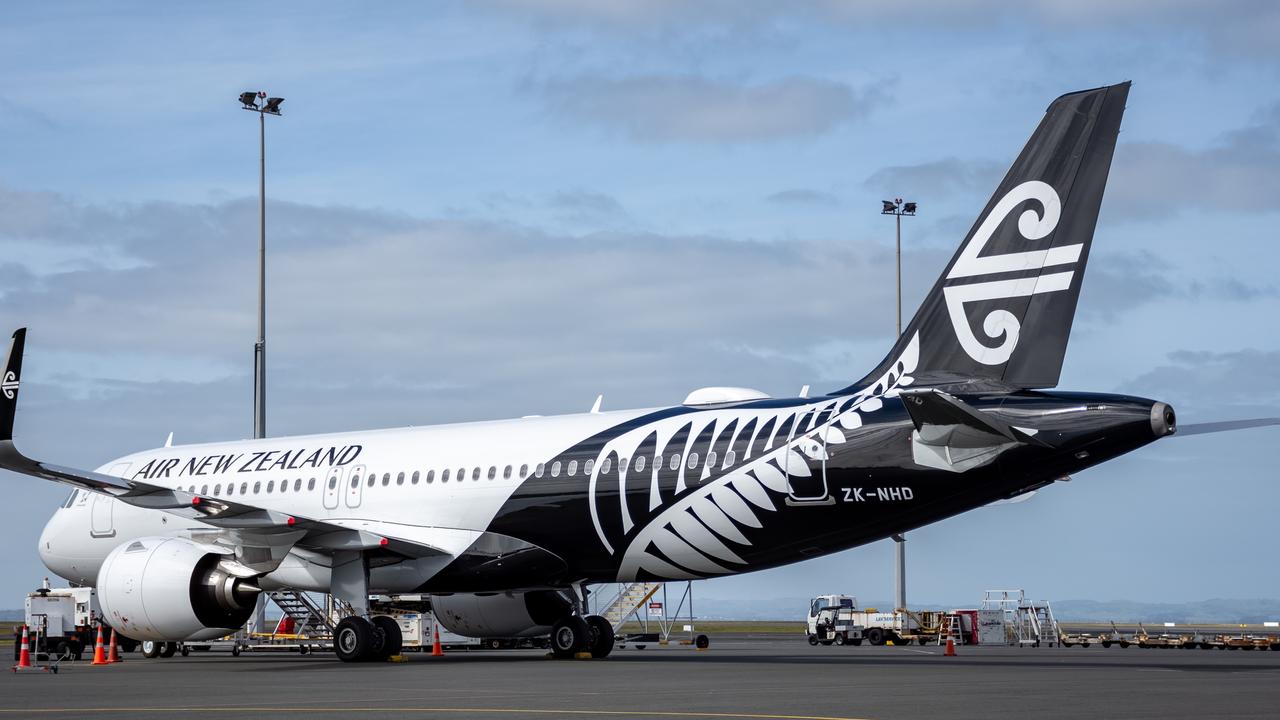
‘Snapped in half’: Man’s horror flight

Uber bans Sydney mum over first name
Tasmania has fully reopened to mainland Australia following almost two years of Covid-19 restrictions.
Fully vaccinated travellers from across the country will be able to visit Tasmania without having to go into hotel quarantine after the border was lifted at midnight on Wednesday.
The state’s border had most recently been closed to people coming from Victoria, NSW and the ACT.
About 95 per cent of people over the age of 12 in Tasmania have had at least one dose of a Covid-19 vaccine, with 89 per cent fully vaccinated.
Premier Peter Gutwein had hoped to reach the 90 per cent vaccination threshold before reopening but stuck to the December 15 date.
“We are one of the most vaccinated places on the planet, opening up after a period of nearly two years where we have had no Covid at all,” he told Sunrise on Wednesday morning.
“We are prepared, ready and looking forward to welcoming people back from all over the country. Many Tasmanians are looking forward to seeing family again after what has been a pretty long 22 months.”

The state is forecast to hit the 90 per cent immunisation target for over 12s later this week.
Double-dose vaccinated people entering Tasmania from Wednesday will still need to abide by strict travel rules.
All travellers to Tasmania, including returning residents, need to register their contact and travel details on the new Tas e-Travel system.
The requirements vary depending on where travellers are coming from.

Anyone who has spent time in what the Tasmanian government deems a high-riskarea in the 14 days before they plan to arrive in the state will be required to return a negative PCR test within 72 hours before departure.
As of Wednesday, the high-risk areas included the entire ACT, several suburbs in Sydney and Melbourne and a few other countries including Tonga and Samoa.
People who have spent time in an “extreme risk” area in the 14 days before they plan to arrive in Tasmania need to apply for approval before they can enter the state.
All other countries fall into the Tasmanian government’s extreme risk category if they are not identified as high or low risk on its Covid-19 website.
A growing number of Australia’s most beautiful natural environments are being closed off to the public in a “crazy” trend.
A man has broken his leg 30 minutes into a seven hour flight after the plane hit turbulence when he was returning from the bathroom.
A woman shares how she was suddenly banned on the Uber app for her name.
- International edition
- Australia edition
- Europe edition

Australia Covid border restrictions: what you need to travel interstate
Some states and territories have tightened restrictions while others have loosened them – or dropped them all together. Here is what you need to know
As the Omicron variant causes Covid case numbers to surge across Australia, state governments have made a number of changes to rules for interstate travel .
While many states relaxed their border restrictions after achieving high levels of vaccination, some have reintroduced certain rules in the wake of the Omicron outbreak and the rapid rise in case numbers.
Others have announced domestic travellers will be allowed to use rapid antigen test results before travelling instead of strictly requiring PCR tests. The changes have come as testing sites have been overwhelmed, with drive-in queues stretching around blocks and wait times ballooning across much of the country.
Here’s a rundown of each state’s current domestic travel requirements.
Domestic travellers to Victoria are no longer required to quarantine or have a permit to enter, regardless of vaccination status.
- New South Wales
Interstate travellers entering NSW do not need to apply for permits . There are, however, some requirements for people who are close or casual contacts after visiting “ places of high concern ” in the 14 days before travelling.
Unvaccinated close contacts may not enter NSW; if they are identified as a close contact and have already travelled to NSW, they will need to complete 14 days of self-isolation.
Fully vaccinated visitors who have been identified as close contacts interstate in the 14 days before arrival can enter NSW, but will need to self-isolate for seven days from the date of exposure. Close contacts who are already in NSW will also need to self-isolate for seven days from exposure.
Casual contacts may enter if they have received a negative Covid test, and will need to complete an entry declaration form.
Returning NSW residents who are close contacts interstate can come back to NSW to self-isolate.
From 1 January, those travelling into Queensland from declared Covid hotspots will be able to cross the border with a negative rapid antigen test instead of a PCR test.
Declared hotspots include all of NSW, ACT and Victoria, as well as all of greater Adelaide in SA and Katherine and Robinson River in the NT.
Authorities have recommended that travellers complete a test on the same day they are due to travel, but will accept results up to 72 hours prior to arrival.
“What that means is someone today who wants to come to Queensland , because it is within the 72 hours [before] 1 January, you can go and get a rapid antigen test and that will be the valid test for you to come into Queensland from today,” said police minister Mark Ryan in a press conference on Wednesday.
From 28 December, Queensland will also no longer require hotspot travellers to get tested on day five after arrival. Chief health officer John Gerrard said he recommended the change after only 0.6% of interstate travellers returned positive tests on day five.
All travellers, including those from non-hotspot areas, will still need an entry pass .
People who have been required to isolate as close, casual or secondary contacts of a confirmed Covid case or interstate exposure site in the past 14 days cannot enter Queensland.
Restrictions for travel into the ACT have been removed entirely, except for close contacts, who are required to complete an exemption form before travelling regardless of vaccination status. Once granted, the exemption will detail quarantine and testing requirements.
There is no requirement for people who are not close contacts to provide proof of a negative Covid test.
Returning ACT residents who are identified as close contacts may seek an exemption and, depending on vaccination status, complete their required seven or 14 days of isolation in the territory.
Those who are notified of close contact status while already in the ACT will need to complete a declaration form .
- South Australia
Fully vaccinated travellers from any state or territory can enter SA and will need to complete an application through EntryCheck SA .
As of 26 December, arrivals from NSW, the ACT or Victoria no longer need to be tested after entry or on day six, but will need to have completed a negative PCR or rapid antigen test in the three days before travelling.
Unvaccinated travellers will need to apply for an exemption.
Western Australia
WA’s border remains under tight travel restrictions , with visitors from every other state or territory barred from entry unless they belong to a narrow set of approved travellers.
Under current rules, travellers from jurisdictions deemed medium, high or extreme risk are not permitted into the state. All seven other states and territories fall into one of these risk categories. The ACT, NT and Tasmania are classified as medium risk; Queensland and SA are classified as high risk; and NSW and Victoria are classified as extreme risk.
Approved travellers from medium and high risk jurisdictions will need to complete 14 days of self-quarantine upon arrival and undergo PCR testing on days two and 12. Those coming from extreme risk jurisdictions will need to quarantine for 14 days in government-approved quarantine facilities, with testing on days one, five and 13.
The hard border also applies to residents of WA looking to return, although residents returning from medium risk jurisdictions may be eligible for an exemption on compassionate grounds .
All travellers to WA must have a G2G pass , proof of double-dose vaccination and proof of a negative PCR test in the 72 hours before arrival.
Plans to ease border restrictions on 5 February are still in place.
Northern Territory
Fully vaccinated travellers are able to enter the NT provided they fill out a border entry form , have proof of vaccination and have completed a negative PCR test in the three days prior to arriving. If an interstate visitor does not have proof of a negative PCR test, it is required that they complete one within 24 hours of arriving.
Travellers will also be given two rapid antigen tests when they arrive in the NT; the first is to be administered within three days and the second on day six.
Unvaccinated visitors may not enter the territory. Unvaccinated NT residents or those with an exemption can enter, but will need to complete 14 days of supervised quarantine at their own cost
Travel is allowed from all other states and territories for those who are fully vaccinated. All travellers to Tasmania are required to complete registration and have proof of vaccination.
If coming from an area deemed high risk , fully vaccinated travellers must have a negative PCR test in the 72 hours leading up to arrival. This rule also applies to Tasmanian residents who have spent more than seven days in a high risk area.
Tasmanians who have spent less than seven days in a high risk area will need to be tested within 72 hours of returning.
Tasmanian premier, Peter Gutwein, has indicated that there will be an update on the possibility of allowing rapid antigen tests for travellers alongside PCR tests after Thursday’s national cabinet meeting.
Update from Tasmania’s Premier on PCR tests required for travellers into the state from high-risk areas. He says he’ll likely have an update on the use of rapid antigen tests after National Cabinet tomorrow #covid19tas #politas pic.twitter.com/7ORo9m1HVN — Monte Bovill (@MonteBovill) December 29, 2021
Unvaccinated travellers are currently not allowed to enter Tasmania unless approved; they will need to quarantine for up to 14 days after entry, but may leave quarantine after five days if tests completed on days one and five are negative.
- Australia news
- Coronavirus
- Australian Capital Territory (ACT)
Most viewed
Tasmania Travel Guide

Courtesy of Katharina13 | Getty Images

Why Go To Tasmania
If you're dreaming of a remote destination filled with historical charm, pristine beaches, unique wildlife and jaw-dropping mountains, then consider vacationing in Tasmania (or Tassie, as the locals call it). Situated about 150 miles south of Australia's mainland, this island appeals to anyone looking for an adventure. Families will enjoy walking across the suspension bridge at the Launceston Cataract Gorge & First Basin , while adrenaline junkies can hike Wellington Park 's Organ Pipes or embark on a multiday trek along Cradle Mountain 's Overland Track. Freycinet National Park is an ideal spot for water sports like snorkeling and kayaking, and once the sun goes down, you can get your heart pounding during an evening ghost tour of the Port Arthur Historic Site . In between sightseeing and exploring your surroundings, you'll find a variety of shops and art galleries, as well as eateries that serve fresh seafood and produce alongside locally made wines, beers, ciders and spirits.
Find Flight and Hotel Deals
Navigate forward to interact with the calendar and select a date. Press the question mark key to get the keyboard shortcuts for changing dates.
Navigate backward to interact with the calendar and select a date. Press the question mark key to get the keyboard shortcuts for changing dates.
- # 7 in Best Places to Visit in Australia and The Pacific in 2023
- # 9 in Best Places to Visit in January 2024
- # 29 in World's Best Places to Visit for 2023-2024
Best of Tasmania
Best hotels in tasmania.
- in Saffire Freycinet
- in The Henry Jones Art Hotel
- in The Sebel Launceston

Best Things to Do in Tasmania
- # 1 in Freycinet National Park (Coles Bay)
- # 2 in Cradle Mountain - Lake St Clair National Park
- # 3 in Wellington Park

Popular Tours

Bruny Island Food, Sightseeing, Guided Lighthouse Tour & Lunch
(2374 reviews)
from $ 169.63

Full-Day Guided Bruny Island Tour from Hobart
(768 reviews)
from $ 97.21

3-Hour Tasman Peninsula Wilderness Cruise from Port Arthur
(179 reviews)
from $ 114.17
Tasmania Travel Tips
Best months to visit.
The best time to visit Tasmania is between December and February, Australia's summer season. Though crowds are at their thickest and room rates at their highest, these months offer the most comfortable temperatures for enjoying the island's abundant outdoor activities. Additionally, summer is filled with food and culture festivals. If you're hoping to hike but want to save some money, consider visiting in late spring (October and November) or early fall (March and April). June, July and August are also months where you're more likely to find accommodation and airfare deals, but you'll want to pack appropriate attire and snow boots to help you cope with the region's chilly temps and ample snow.
Weather in Tasmania
Data sourced from the National Climatic Data Center
What You Need to Know
Cider is big here Known as the "Apple Isle," Tasmania grows roughly 55,000 metric tons of apples annually in its Huon Valley. Many of the apples harvested are turned into cider, which you can sample on The Tasmanian Cider Trail .
Opposites apply Australia's summer season falls during America's winter, and locals drive on the left side of the road.
Some hiking paths require reservations The Three Capes Track requires advance bookings year-round, while the Overland Track in Cradle Mountain-Lake St Clair National Park only grants access from October through May to visitors with reservations.
How to Save Money in Tasmania
Go camping Tassie hotel rooms can cost more than $100 per night, while campgrounds range from 6 to 13 Australian dollars (or $5 to $10) per night, per person to AU$30 to AU$50 (about $24 to $40) for stays lasting up to seven nights. Plus, kids 17 and younger stay for free at any national park campground.
Plan a winter visit Accommodation prices are generally higher when the weather warms up between December and February, Tasmania's summer and peak season. Also, most trails are free to access in the winter.
Skip the national parks If you want to explore the great outdoors without burning a hole in your wallet, check out natural wonders like the Launceston Cataract Gorge & First Basin and Wellington Park . Both are free to visit.
Culture & Customs
The bulk of Tasmania's art- and culture-focused attractions reside in Hobart, and a variety of music, film and craft events – including the Junction Arts Festival and the Tasmanian Craft Fair – are hosted every year. For an in-depth look at the island's art scene, check out the Tasmanian Arts Guide website .
Tassie's atmosphere is relaxed and its residents are friendly, which makes navigating this island as a tourist relatively easy. English is the official language here and throughout Australia, but Aussie English is a bit different from American English, so you'll want to know a few key words and phrases – like "g'day" (hello), "reckon" (for sure) and "ripper" (great) – to help you get by. Aussies are also known for having a dry sense of humor; expect to hear some sarcastic or frank remarks while visiting.
When walking, you'll need to look right, then left and then right again before crossing a street. If you're driving, remember to stay on the left side of the road. Aussies use the metric system, so road signs post distances in kilometers, and speed signs list speed limits in kilometers per hour. One kilometer equals about a half-mile.
Should you decide to hail a cab, keep in mind Australia's tipping policy. No passenger is expected to tip cab drivers or restaurant staff unless exceptional service is provided, but to make receiving change a bit easier, locals often round up to the nearest Australian dollar (Australia's official currency, which equals about $0.79). Currency rates may fluctuate, so check the latest exchange rate before you visit.
What to Eat
Tasmania's cuisine highlights fresh produce grown on the island and seafood farmed on land and caught offshore. Weekly markets like Hobart's Salamanca Market feature an array of food stalls that sell raw and prepared foods, and restaurants commonly incorporate local specialties like Tasmanian Atlantic salmon, wild abalone, black truffles and leatherwood honey into their menus. Landscape Restaurant & Grill and Blue Eye in Hobart, Black Cow Bistro and Cataract on Paterson in Launceston and The Rectory and Mrs Jones Restaurant Bar Lounge in Devonport are just a few eateries that highlight some of these ingredients in regional dishes like scallop pie (a pastry stuffed with scallops in a creamy curry sauce).
Hobart is also known for offering a plethora of international cuisines, from Chinese to French to Argentinean. Some of the city's most popular restaurants include the Italian-focused Solo Pasta & Pizza , the Lebanese-inspired Syra Restaurant and the Greek-influenced Urban Greek .
Although Tassie's dining scene is growing, the island is best known for its alcoholic beverages. Nicknamed the "Apple Isle" because of its abundance of apple orchards, cider is one of the most commonly produced drinks in the region. Tasmania's pure water also makes it a great place for creating distilled spirits like whiskey, vodka and gin. Many craft breweries are spread throughout the island as well. If you're interested in sampling some of Tassie's brews and spirits, consider exploring the area's beer , cider and whiskey trails.
Tasmania also features seven wine regions, where vineyards produce everything from pinot noir to sauvignon blanc to various sparkling wines. The island's oldest and largest wine district is the Tamar Valley, which sits near Launceston and has more than 30 vineyards. Other wine regions include Pipers River (also near Launceston) and the Derwent Valley (just north of Hobart). Puddleduck Vineyard , Bruny Island Premium Wines and Josef Chromy Wines are a few of Tassie's most popular wineries.
Tasmania is considered a relatively safe place to visit, but you should take precautions when enjoying the island's outdoor activities. Be mindful of any undertows at Tassie beaches. If you find yourself caught in one, swim parallel to land until you're out of the rip current, then swim to shore. You'll also want to travel with a companion and wear insect repellent and adequate boots when hiking. If you're anticipating going on a multiday trek on trails like the Three Capes Track and the Overland Track, Parks & Wildlife Service Tasmania strongly suggests telling someone your plans before you depart.
Additionally, you should stay alert while in any part of Australia, since terrorist threats have increased recently. For up-to-date information regarding Australia's current threat level, visit the Australian Government's Australian National Security website . And when visiting larger cities like Hobart, be mindful of your belongings. Foreigners are occasionally targeted by pickpockets and petty thieves in popular tourist areas. To learn more about how to stay safe while visiting Australia, check out the U.S. State Department's website .
Getting Around Tasmania
The best way to get around Tasmania is by car. Though you'll have to get used to different driving norms, such as traveling on the left side of the road and calculating distances in kilometers, hiring a car is an affordable and convenient way to see many Tassie cities and sights. Organized bus tours from local companies are also available but are often more expensive and require sticking to set itineraries. Within major cities like Hobart and Launceston, public and private bus services are also an option. Keep in mind that bus operators vary by destination, and routes between cities are generally limited. Additionally, you can hail a taxi, but cab fares are high and are dependent on the location and time of day.
To get between smaller Tassie destinations, you may have the option of flying into regional airports, though you'll need another way to get to and from attractions. The Spirit of Tasmania offers ferry service between Devonport and Melbourne , however, this mode of transportation cannot be used to reach other mainland cities in Tasmania; some ferries do travel to and from smaller Tasmanian islands. If you don't reach the island by ferry, plan on flying into Hobart International Airport (HBA).
Entry & Exit Requirements
To visit Tasmania, you will need a valid U.S. passport and a visa. If you're staying in Australia for less than 90 days, you can apply for your Electronic Travel Authority (an electronic, label-free visa) on the Australian Government Department of Immigration and Border Protection's website . Some airlines and travel agents can apply for an Electronic Travel Authority on your behalf. For more information about entry and exit requirements, check out the U.S. State Department's website .
Cradle Mountain - Lake St Clair National Park 's towering mountains, lush forests and clear lake waters will leave you in awe.
Explore More of Tasmania

Things To Do
Best hotels.

You might also like

Galapagos Islands
# 3 in Best Places to Visit in Central and South America in 2023

# 6 in Best Islands in the World for 2024

Great Barrier Reef
# 4 in Best Places to Visit in Australia and The Pacific in 2023
If you make a purchase from our site, we may earn a commission. This does not affect the quality or independence of our editorial content.
Recommended
The 25 Best Beaches on the East Coast for 2024
Timothy J. Forster|Sharael Kolberg April 19, 2024

The 50 Best Hotels in the USA 2024
Christina Maggitas February 6, 2024

The 32 Most Famous Landmarks in the World
Gwen Pratesi|Timothy J. Forster February 1, 2024

9 Top All-Inclusive Resorts in Florida for 2024
Gwen Pratesi|Amanda Norcross January 5, 2024

24 Top All-Inclusive Resorts in the U.S. for 2024
Erin Evans January 4, 2024

26 Top Adults-Only All-Inclusive Resorts for 2024
Zach Watson December 28, 2023

Solo Vacations: The 36 Best Places to Travel Alone in 2024
Lyn Mettler|Erin Vasta December 22, 2023

26 Cheap Beach Vacations for Travelers on a Budget
Kyle McCarthy|Sharael Kolberg December 4, 2023

The 50 Most Beautiful White Sand Beaches in the World
Holly Johnson December 1, 2023

The 26 Best Zoos in the U.S.
Rachael Hood November 16, 2023

Exploring The Latest Travel Restrictions For Tasmania: What You Need To Know
- Last updated Nov 04, 2023
- Difficulty Beginner
- Category United States
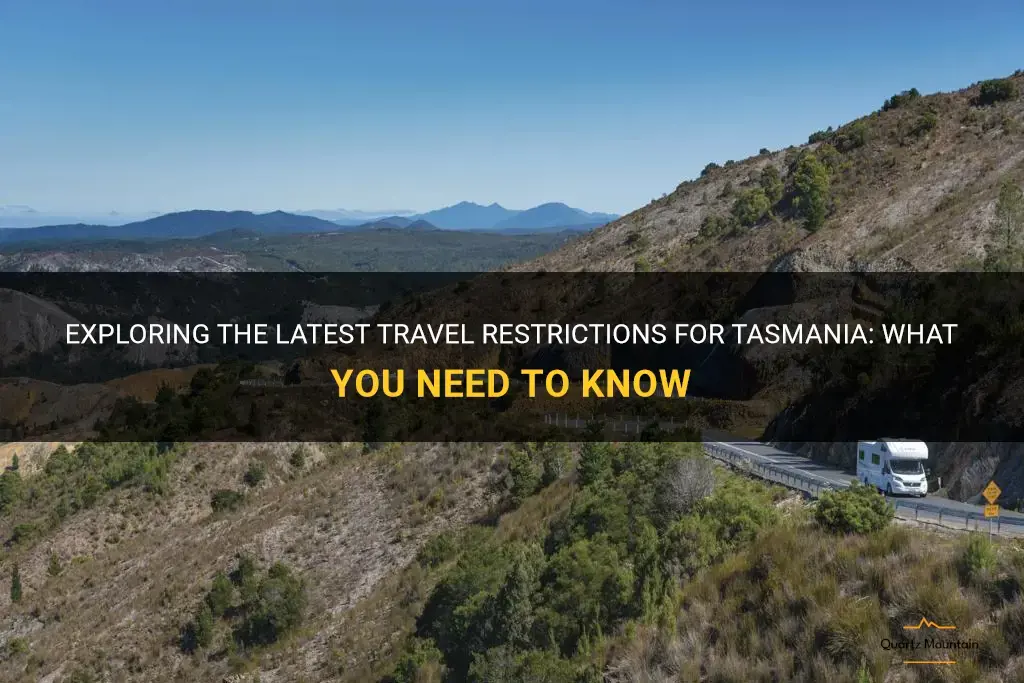
Imagine a place where lush landscapes and captivating wildlife await, where pristine beaches and dramatic coastlines redefine beauty - welcome to Tasmania, Australia's island paradise. But before you start booking your trip, it's important to understand the travel restrictions in place due to the current global climate. Just like a well-guarded treasure, Tasmania has implemented certain measures to protect its unique ecosystem and its residents from potential risks. So, whether you're a seasoned adventurer or a curious traveler, let's dive into the world of travel restrictions in Tasmania and unlock the door to this enchanting destination.
What You'll Learn
What travel restrictions are currently in place for tasmania, are there any exemptions to the travel restrictions for tasmania, are there specific requirements or documentation needed to enter tasmania, are there any quarantine or testing requirements for travelers to tasmania, how long are the travel restrictions expected to be in place for tasmania.

Tasmania, an island state located in Australia, is known for its stunning natural beauty and unique wildlife. In order to protect the local population and prevent the spread of COVID-19, the Tasmanian government has implemented several travel restrictions. These restrictions are subject to change and it's important to stay updated on the latest information before planning a trip to Tasmania.
Currently, the main travel restrictions in place for Tasmania include a requirement for all visitors to have a valid G2G PASS. This pass is an online form that needs to be completed by anyone traveling to Tasmania, including residents returning home. The form asks for personal details, travel plans, and health information. It is important to provide accurate information as false declarations can lead to heavy penalties.
In addition to the G2G PASS, travelers may be required to quarantine upon arrival in Tasmania, depending on their travel history. The quarantine requirements are subject to change based on the COVID-19 situation in different regions. As of the time of writing this article, travelers from low-risk areas within Australia are not required to quarantine. However, travelers from high-risk areas, as determined by the Tasmanian government, are required to quarantine for 14 days in a government-designated facility. It is important to check the Tasmanian government's website for the latest information on the high-risk areas.
To enforce the quarantine requirements, the Tasmanian government has implemented strict monitoring measures. Travelers are required to wear a tracking device, such as a wristband or a smartphone app, to ensure compliance with the quarantine rules. Failure to comply with the quarantine requirements can result in significant fines and penalties.
It is also important to note that international travel to Tasmania is currently restricted. Only Australian citizens, permanent residents, and certain exempted individuals are allowed to enter Tasmania. All international travelers must undergo mandatory quarantine for 14 days in a government-designated hotel at their own expense.
The Tasmanian government is constantly reviewing and updating the travel restrictions based on the evolving COVID-19 situation. It is advised to regularly check the official government websites for the latest information before planning any travel to Tasmania. Failure to comply with the travel restrictions can result in serious penalties and disruption to your travel plans.
In conclusion, if you are planning a trip to Tasmania, it is crucial to be aware of the current travel restrictions in place. These restrictions include the requirement for a G2G PASS, potential quarantine requirements based on travel history, and monitoring measures to ensure compliance. International travel to Tasmania is currently restricted to certain individuals, who must undergo mandatory quarantine. Stay informed, follow the guidelines, and prioritize the health and safety of yourself and the local community.
Understanding the Travel Restrictions for Entering France from the USA
You may want to see also
Tasmania, an island state of Australia, has implemented travel restrictions in response to the ongoing COVID-19 pandemic. These restrictions aim to protect the health and safety of the Tasmanian community by limiting the spread of the virus. While the travel restrictions are generally stringent, there are a few exemptions that allow certain individuals to travel to Tasmania.
Essential workers:
Those who are classified as essential workers may be exempt from the travel restrictions. Essential workers include healthcare professionals, emergency service providers, and workers in critical infrastructure sectors such as food production and distribution, energy, and transportation. These individuals are crucial in maintaining essential services and are allowed to travel to Tasmania for work purposes.
Medical reasons:
People who need medical treatment that can't be accessed in Tasmania may be granted an exemption. This could include individuals requiring specialized surgeries, treatments, or consultations not available on the island. However, it is important to note that these exemptions are reviewed on a case-by-case basis and require documentation from a qualified medical professional.
Compassionate reasons:
Exemptions may be granted for individuals who need to travel to Tasmania for compassionate reasons, such as visiting a seriously ill family member, attending a funeral, or providing essential care and support to a vulnerable person. Compassionate reasons are considered on an individual basis, and travelers must provide appropriate documentation to support their case.
Returning residents:
Tasmanian residents who have been stranded interstate or abroad due to the travel restrictions are allowed to return to the state. However, they are required to undergo mandatory quarantine upon arrival to ensure they do not pose a risk to the community. These returning residents may need to provide proof of residency and follow any additional testing or isolation requirements.
It is important to note that anyone granted an exemption to travel to Tasmania must adhere to all quarantine protocols and public health guidelines. This includes self-isolation, COVID-19 testing, and monitoring for symptoms. Failure to comply with these requirements may result in penalties or the cancellation of the exemption.
The Tasmanian government regularly reviews and updates the travel restrictions and exemptions based on the current COVID-19 situation. It is essential for individuals seeking exemptions to stay informed about the latest guidelines and requirements by regularly checking official government websites and contacting relevant authorities.
In summary, while Tasmania has implemented strict travel restrictions, there are exemptions in place for essential workers, individuals with medical or compassionate reasons, and returning residents. These exemptions are subject to approval and require supporting documentation. It is crucial for travelers to adhere to all quarantine and public health requirements to protect the Tasmanian community.
Exploring Abkhazia: Understanding the Current Travel Restrictions in the Region
In order to enter Tasmania, there are some specific requirements and documentation that you will need to have in place. Whether you are a domestic traveler or an international visitor, it is important to be prepared and ensure you have the necessary documents to enter the state.
For domestic travelers, if you are coming from mainland Australia, you will not need a passport to enter Tasmania. However, you will need to carry some form of identification such as a driver's license or a birth certificate. This is to verify your identity and ensure that you are a resident of Australia. It is also a good idea to carry any relevant travel documents such as hotel reservations or travel itineraries, as this may be requested by officials at the border.
For international visitors, the requirements are a bit more complex. Most travelers will need to have a valid passport that is valid for at least six months beyond the date of entry into Tasmania. Additionally, you may need to have a valid visa or travel authorization depending on your country of citizenship. It is important to check the specific visa requirements for your country before you travel.
In addition to the passport and visa requirements, all international visitors to Tasmania will need to complete an Incoming Passenger Card. This card asks for basic information such as your name, passport number, flight details, and your intended address in Tasmania. This card will be collected by Customs officials upon your arrival, so make sure to fill it out accurately and legibly.
It is also important to note that there may be specific documentation requirements for certain types of travelers. For example, if you are traveling with minors who are not your own children, you may need to have a consent letter or other documentation from their parents or legal guardians. Similarly, if you are planning to bring pets into Tasmania, there may be specific requirements and documentation needed for their entry.
To ensure a smooth entry into Tasmania, it is recommended to have all your documentation and identification readily available and easily accessible. This will help to streamline the entry process and minimize any potential delays or issues. It is also a good idea to familiarize yourself with the entry requirements and regulations before you travel, as these may change from time to time.
Overall, entering Tasmania requires some specific requirements and documentation, regardless of whether you are a domestic traveler or an international visitor. By being prepared and having the necessary documents in place, you can ensure a smooth and hassle-free entry into this beautiful state.
Exploring Kansas: An Update on Travel Restrictions and Guidelines for Visitors
As the world continues to grapple with the ongoing pandemic, travel restrictions and quarantine measures have become a common part of our lives. For those considering a trip to Tasmania, it is essential to be aware of the current quarantine and testing requirements.
Tasmania, an island state of Australia, has implemented strict guidelines to protect its population and prevent the spread of COVID-19. All travelers arriving in Tasmania, regardless of their origin, must comply with these regulations.
Quarantine is a mandatory requirement for most travelers entering Tasmania. The length of the quarantine period varies depending on a few factors such as vaccination status and travel history. Generally, fully vaccinated travelers may have shorter quarantine periods compared to those who are not vaccinated. It is important to note that the vaccination must be recognized by the Australian Government. Additionally, certain travel history, such as being in a high-risk area, may require a longer quarantine period.
During the quarantine period, travelers are required to stay at a designated quarantine facility. These facilities are equipped to ensure the safety and well-being of individuals while they wait for their quarantine period to end. The facilities provide comfortable accommodations and necessary amenities.
In addition to quarantine, all travelers to Tasmania must undergo COVID-19 testing. Prior to arrival in Tasmania, travelers are required to take a COVID-19 test within a specified timeframe. The exact timing and type of test may vary, so it is important to check the latest guidelines before traveling.
Upon arrival in Tasmania, travelers are also subject to further testing. This may include rapid antigen tests or PCR tests. These tests are conducted to ensure that travelers are not carrying the virus and to monitor any potential spread within the community.
The quarantine and testing requirements for travelers to Tasmania are critical in mitigating the risk of COVID-19 transmission. These measures are in line with the recommendations of health experts and are aimed at safeguarding the health of the Tasmanian population.
It is important for travelers to comply with these requirements and to stay informed about any updates or changes. The Tasmanian government regularly reviews and updates the guidelines based on the evolving situation. Before embarking on a trip to Tasmania, it is advisable to check the official government websites or consult with travel agencies for the most up-to-date information.
In conclusion, quarantine and testing requirements are in place for travelers to Tasmania to reduce the risk of COVID-19 transmission. These measures are crucial in protecting the health and well-being of both the Tasmanian community and visitors. By staying informed and complying with the guidelines, travelers can ensure a safe and responsible visit to this beautiful island state.
Understanding Mexico's Travel Restrictions: What You Need to Know
Travel restrictions in Tasmania have been in place for several months now, and many people are wondering when they will be lifted. The exact duration of these restrictions is uncertain and depends on various factors, including the ongoing COVID-19 situation and the progress of vaccination campaigns.
The Tasmanian government has been closely monitoring the spread of the virus and making decisions about travel restrictions based on public health advice. The main objective is to protect the health and safety of Tasmanian residents and prevent the introduction and spread of COVID-19 in the community.
The travel restrictions currently in place include border closures, quarantine requirements, and limits on the number of people allowed to gather in certain public spaces. These measures are designed to reduce the risk of COVID-19 transmission and prevent outbreaks from occurring.
In terms of the duration of the travel restrictions, it is difficult to provide a specific timeframe. The government regularly reviews the restrictions in place and adjusts them as needed based on the current situation. This means that the restrictions could be lifted or modified at any time, depending on the level of risk and the progress of efforts to control the virus.
It is important to note that the duration of the travel restrictions not only depends on the situation within Tasmania but also on the situation in other parts of Australia and internationally. If there are outbreaks or high levels of community transmission in other states or countries, it is likely that the travel restrictions will remain in place to prevent the importation of the virus.
Additionally, the progress of vaccination campaigns plays a significant role in determining the duration of travel restrictions. Once a large proportion of the population is vaccinated, the risk of transmitting and developing severe cases of COVID-19 decreases significantly. This could lead to the easing of travel restrictions as the overall risk is reduced.
However, it is essential to remember that the situation with COVID-19 is constantly evolving. New variants of the virus may emerge, and the effectiveness of vaccines against these variants may vary. This means that travel restrictions may need to remain in place even as vaccination rates increase to ensure ongoing protection against the virus.
In conclusion, the exact duration of the travel restrictions in Tasmania is uncertain and depends on various factors, including the ongoing COVID-19 situation, the progress of vaccination campaigns, and the risk of importation of the virus from other states or countries. The government regularly reviews and adjusts the restrictions based on public health advice, and their duration may change as the situation evolves. It is important for individuals to stay informed about the current restrictions and follow any guidelines or requirements in place to help protect themselves and the community.
Exploring the Current Travel Restrictions from Hawaii to California: What You Need to Know
Frequently asked questions.

- Naim Haliti Author Editor Reviewer Traveller

- Cagri Burak Author Reviewer Traveller
It is awesome. Thank you for your feedback!
We are sorry. Plesae let us know what went wrong?
We will update our content. Thank you for your feedback!
Leave a comment
United states photos, related posts.
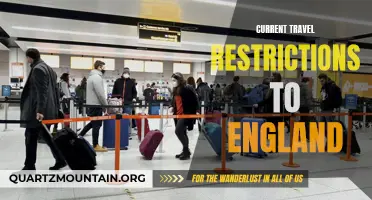
Exploring the Latest Travel Restrictions to England: What You Need to Know
- Aug 28, 2023
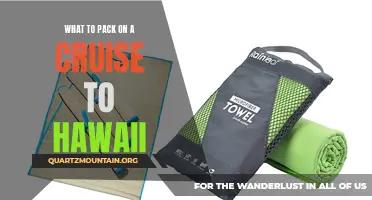
Essential Items to Include in Your Cruise Packing List for Hawaii
- Feb 25, 2024
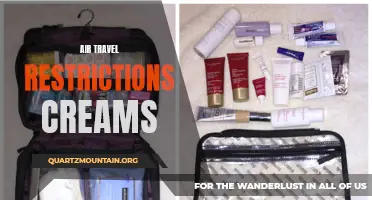
The Basics of Air Travel Restrictions on Creams: What You Need to Know
- Aug 04, 2023

Essential Items to Pack for Your Bonaire Adventures
- Nov 27, 2023
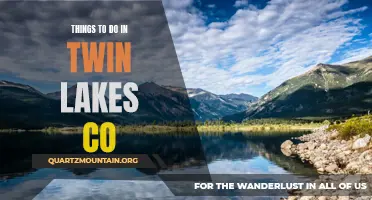
12 Must-Try Activities in Twin Lakes CO
- Jun 13, 2023
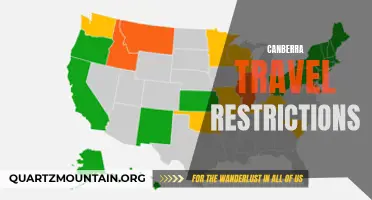
Exploring Canberra: Understanding Current Travel Restrictions and Guidelines
- Aug 21, 2023
The Travel Quandary
10 Things To Know About Tasmania Before You Go
Planning a holiday to Tasmania? Excellent choice.
Although we had both visited Tasmania years ago, this was the first time visiting the island state together with fresh eyes and a few more dollars in the bank account. Despite this trip being within our home country, Australia, there were a few things that caught us unaware, so, we thought we should pass on these lessons to fellow travellers.
Here are some useful things to know in advance, especially if it’s your first time visiting Tasmania.
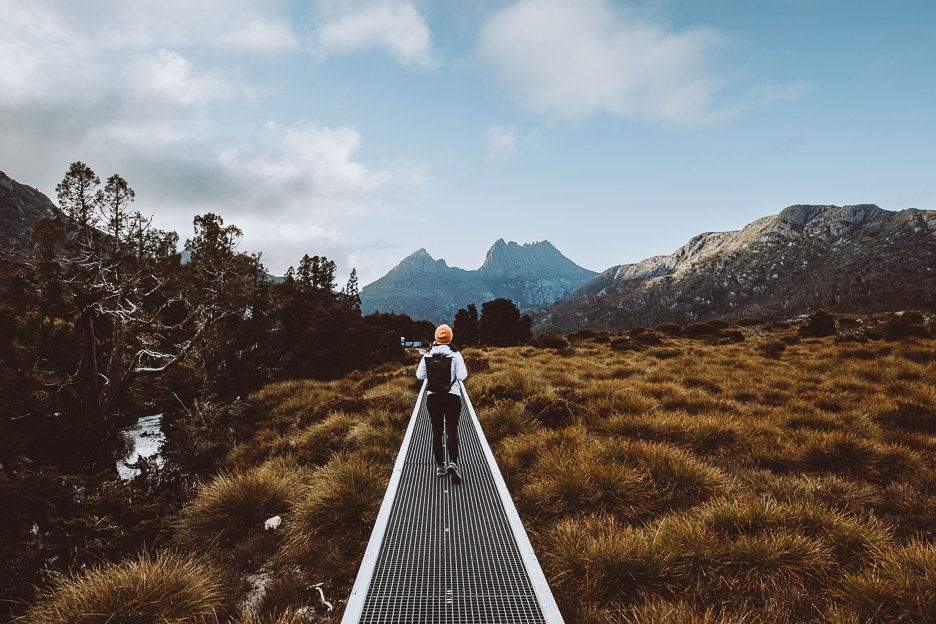
WHAT TO KNOW BEFORE YOU TRAVEL TO TASMANIA
1. you’ll experience the 4 seasons in a day, almost every day.
The best time to visit Tasmania is arguable, depending on who you ask. We purposefully travelled to Tasmania at the beginning of the Australian summer for the warmer temperatures and longer daylight hours.
Across our 17 days Tasmanian road trip, we were blessed with fine weather, with a rainy day in Freycinet National Park at the beginning and some light drizzle here and there. On the days that there was an overcast sky and howling winds in the morning, we would often find ourselves driving through the countryside in the afternoon with a clear blue sky and warm sunshine on our skin.
Based on our experience and also speaking to locals, you need to be prepared for the 4 seasons in a day. A raincoat should be packed and dressing in layers is usually wise too.
2. The sun feels hotter than you expect
If like us, you’re visiting Tasmania in November , you need to pack sunscreen and you need to apply it. Our Tasmania road trip began at the end of November 2021 and we were blessed with mostly clear blue skies and sunny days. What we didn’t expect was the heat of the sun! It was much hotter than anticipated that we ended up with sunburned foreheads and blistering skin after our few days exploring the east coast of Tasmania.
So we recommend that you slip, slop, slap. You have been warned.
3. Not all roads are sealed
Yes, Google Maps can show you the fastest route to your next stop but keep in mind that not all roads are tar sealed.
We found this out the hard way when we drove to The Keep in Goulds Country (along C841). Mind you, there is no other option given the remote location of this Tasmanian luxury accommodation retreat, but the logging roads did catch us off guard.
2WD cars should be able to handle these roads anyway, but it pays to know now, particularly when booking your rental vehicle in advance and planning a Tasmanian road trip ( consider your travel insurance cover if you’re selecting a campervan option!).
PLAN YOUR OWN TASMANIA ROAD TRIP ITINERARY
4. phone signal can be patchy.
Bevan is with Telstra and Jasmine is with Vodafone so having each of us across two networks was beneficial. We found that even along the coast line close to towns, phone signal is patchy. When visiting the cities, the phone signal is perfectly fine.
If you’re heading inland, we found that Telstra provides better service. When you know that you’re going to a remote location, check the directions before you lose signal, take a screenshot of the route on your phone or lock in the route on Google Maps before going off grid.
5. Don’t forget your National Parks Pass
Tasmania has 19 national parks in total which covers approximately 40% of the state. So if you’re planning to visit Tasmania, we can hazard a guess that you’re likely to visit at least one national park and you will need to purchase a National Parks Pass.
A parks pass can be purchased per person or per vehicle. All the relevant and most up-to-date information about entry fees and types of national park passes can be found on this website.
We purchased the Holiday Vehicle Parks Pass which cost AUD $80 and was valid for two months for up to 8 people in the one vehicle. It covers entry into all Tasmanian National Parks, including Cradle Mountain (price and information valid as at November / December 2021).
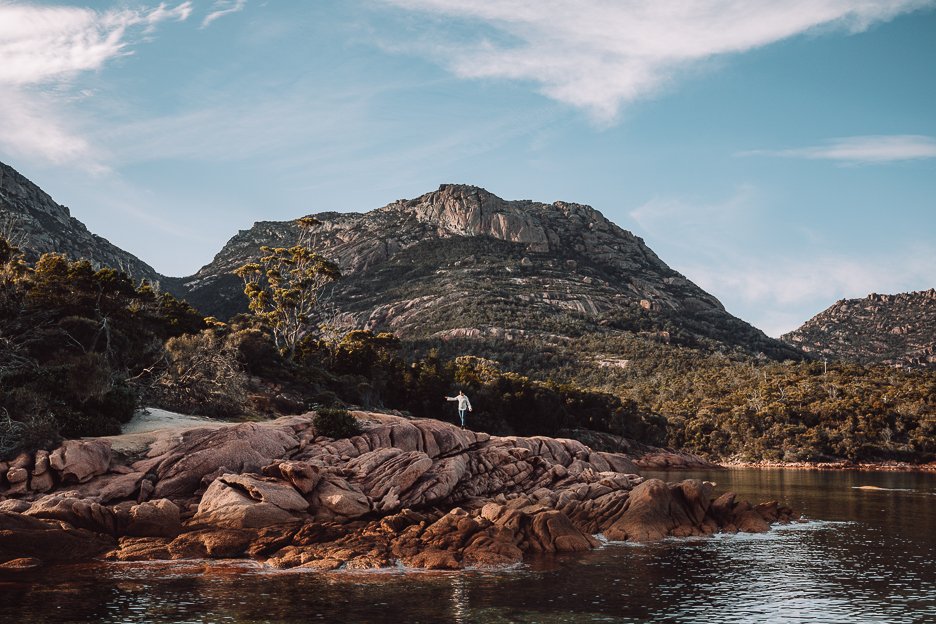
6. Don’t even try to fly
Drones are not permitted in National Parks in Tasmania. Period.
There are signs throughout the parks so please don’t be a douche and respect this directive. There are other popular locations that will not allow the non-commercial use of your drone unless you have a license. Seek permission if you are unsure. Otherwise use your smartphone, your DSLR and tripod.
7. Book your rental car from Hobart CBD rather than Hobart Airport
Depending on your Tasmania itinerary, consider booking your rental car from an alternative location than the airport.
By choosing to end our 2 week road trip around Tasmania in Hobart and opting for a CBD car rental agency, we reduced our car rental period by two full days. The two days’ savings plus CBD location was a material difference compared to a car rental from Hobart Airport – even after budgeting for two Uber trips between Hobart Airport and Hobart CBD.
It pays to do a little extra research if it means you can save some money to put towards another part of your holiday!
8. Drive slowly and watch out for wildlife crossings
Tasmania is home to an abundance of wildlife including wallabies, wombats, echidnas, birdlife, pademelons and plenty more.
We passed more roadkill during our road trip than we would have liked and even had a few close scrapes ourselves. Often the roads are winding and one-lane only in each direction with little room on the shoulders. It goes without saying – drive carefully – especially at dawn and dusk.
9. There are no toll roads
Hooray! It’s the smallest state in Australia with virtually no highways. You’re unlikely to drive for longer than 2 hours at a time to your next destination and thankfully, there are no toll roads.
Speed limits and paid parking are still a thing so make sure to take note of both.
10. Biodiversity is sacred
If it’s your first time visiting Australia but also your first time visiting Tasmania, remember that there are strict laws in place to conserve and protect Australia’s biodiversity. Given that Tasmania itself is an island, the unique species only found here also need additional protection.
You cannot bring in any fresh produce from the mainland such as fruit and vegetables, so make sure to throw away any food scraps before entering Tasmania. There are hefty fines and penalties for those caught.
Tasmania Travel Restrictions - As at November / December 2021
Do you need a covid-19 test to enter tasmania.
At the time we travelled, we did not need a negative PCR test or a negative RAT result to enter Tasmania from Queensland.
The only requirement was to complete a Tasmanian e-Health declaration online (which somewhat functioned as a Tasmanian border pass) and to show this completed declaration to authorities upon arrival at Hobart Airport. Essentially, the e-Health declaration would allow you to enter Tasmania from Queensland if you had not been in a declared COVID-19 hotspot in the last 14 days and we were confident that we were not displaying any symptoms of COVID-19.
When we arrived back to Queensland in early December 2021, the Omicron variant was starting to spread in Australia and the entry requirements into Tasmania soon changed to adapt to the circumstances.
Check the relevant state and health websites before travelling to ensure you have met all COVID-19 related entry requirements.
Is Tasmania safe to travel?
Absolutely. Follow the road rules, be prepared when entering national parks and take caution when the weather turns bad. Given Tasmania’s remote location and less densely populated cities and towns, COVID-19 has fortunately had minimal impact to the locals but has been detrimental to the tourism industry and many local businesses with state border closures. With some advance planning and the above helpful tips, you will enjoy a wonderful trip in Tasmania.
CONTINUE PLANNING YOUR TASMANIA TRIP
- Tasmania Road Trip Itinerary | 17 days around Van Diemen’s Land
City Guide | How To Spend 3 Days in Hobart Tasmania
- What To Do In Launceston, Tasmania
- Things To Do In Stanley, Tasmania
- 12 Best Coffee Spots in Hobart
- Accommodation Review | Bay of Fires Bush Retreat – Binalong Bay
Accommodation Review | The Keep – Goulds Country, Tasmania
- Hotel Review | MOSS Hotel – Hobart, Tasmania
- Hotel Review | Change Overnight Hotel – Launceston, Tasmania
- Hotel Review | Ship Inn – Stanley, Tasmania
Things to know about Tasmania
Like this post pin it and share it.
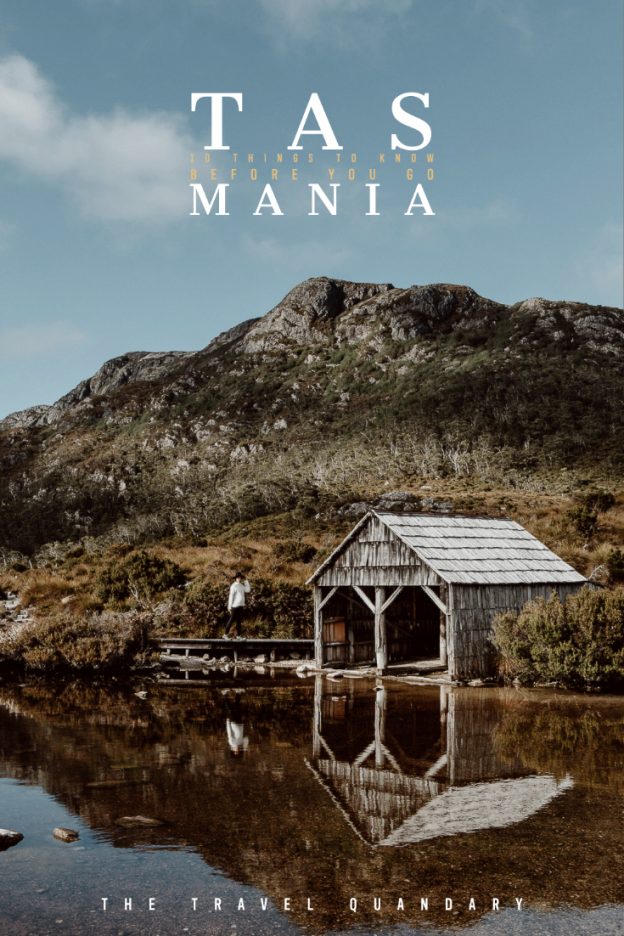
CONTINUE PLANNING YOUR TRAVELS
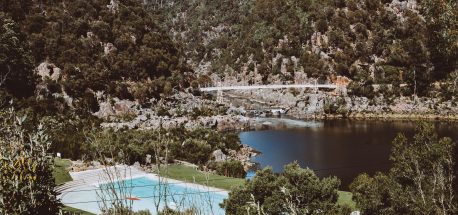
What To Do In Launceston Tasmania
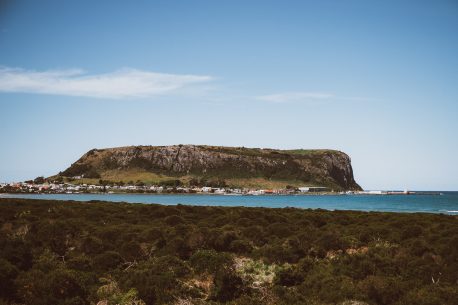
Things To Do In Stanley Tasmania
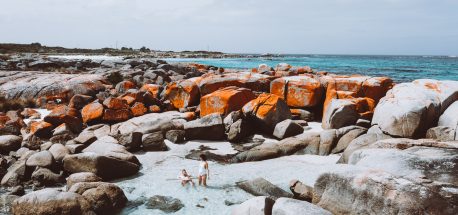
Tasmania Road Trip Itinerary | 17 days around Van Diemen’s Land
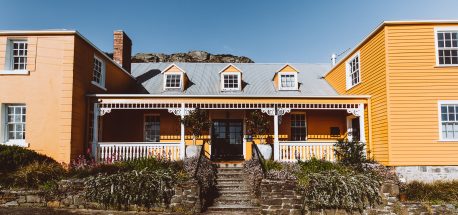
Hotel Review | The Ship Inn – Stanley, Tasmania
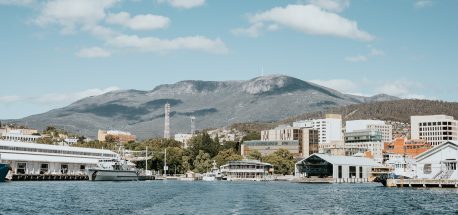
Accommodation Review | Into The Woods – Palmwoods, Queensland
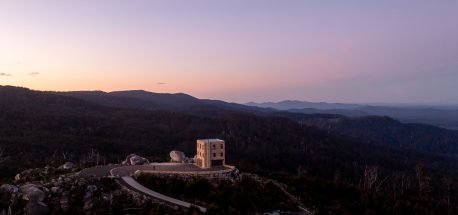
The Secret We’d Like To Keep | A Luxury Stay In Northern Tasmania
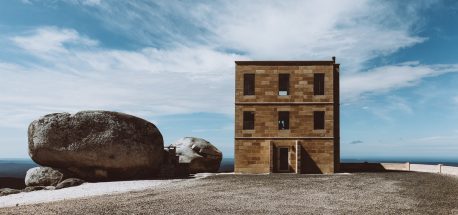
Leave a comment Cancel reply
Solve your quandary.
The best of our travel tips direct to your inbox. Receive our latest posts by dropping your email address below.
We promise to only send you the good stuff!
FOLLOW US ON INSTAGRAM

This website uses cookies to ensure you get the best experience on our website. By continuing to use this website, you consent to the use of cookies in accordance with our Privacy Policy .
Australian Government Department of Health and Aged Care
COVID-19 and travel
Find out about travel requirements and steps you can take to stay safe.
Domestic travel within Australia
Domestic travel requirements are determined by state and territory governments. Check the websites of local health departments for information about travel to:
- Australian Capital Territory
- New South Wales
- Northern Territory
- South Australia
- Western Australia .
Travelling overseas
The Australian Government does not currently have any COVID-19 requirements in place for travellers entering and departing Australia.
COVID-19 however continues to pose a health risk in Australia and overseas. We strongly encourage wearing masks and being vaccinated while travelling internationally. You should practice good cough and hand hygiene, and physically distance from others where possible.
Some countries, airlines and vessel operators may have COVID-19 travel requirements in place. Check the requirements of any:
- countries you are travelling to, or transiting through
- airlines or vessel operators.
- Smartraveller website
- Australian Government – international travel information .
Travel insurance
Travel insurance is important if you become sick with COVID-19 overseas. Make sure your insurance includes:
- transit destinations
- inclusions for COVID-19
- other add-ons like cruise specific insurance.
Some destinations also require travellers to hold travel insurance as a condition of entry.
Cruise travel
Check with your cruise provider or travel agent for up-to-date travel requirements for your ship and destination/s. You can also contact the relevant state or territory government to find out if any requirements apply for your destination.
Outbreaks onboard a cruise
Cruise ships carry a higher risk for spreading disease compared to other types of travel. COVID-19, influenza, and other infectious diseases spread easily between people living and socialising in close quarters.
If an outbreak of COVID-19 occurs on your cruise, you may need to:
- quarantine on the ship
- disembark and follow the local rules in the state or territory or country you are in.
Before you travel, check the Smartraveller advice on cruises . Contact your travel agent or cruise operator for specific information on their COVID-19 safety protocols.
- Coronavirus (COVID-19)
Is there anything wrong with this page?
Help us improve health.gov.au
If you would like a response please use the enquiries form instead.

Australia Recommends 2024

Come and Say G'day

G'day, the short film

Discover your Australia

Travel videos

Deals and offers


Australian Capital Territory

New South Wales

Northern Territory

South Australia

Western Australia

External Territories

The Whitsundays

Mornington Peninsula

Port Douglas

Ningaloo Reef

Airlie Beach

Kangaroo Island

Rottnest Island

Hamilton Island

Lord Howe Island

Tiwi Islands

Phillip Island

Bruny Island

Margaret River

Barossa Valley

The Grampians

Hunter Valley

McLaren Vale

Glass House Mountains

Alice Springs

Uluru and Kata Tjuta

The Kimberley

Flinders Ranges

Kakadu National Park

Eyre Peninsula

Karijini National Park

Great Barrier Reef

Blue Mountains

Daintree Rainforest

Great Ocean Road

Purnululu National Park

Cradle Mountain-Lake St Clair National Park

Litchfield National Park

Aboriginal experiences

Arts and culture

Festivals and events

Food and drink

Adventure and sports

Walks and hikes

Road trips and drives

Beaches and islands

Nature and national parks

Eco-friendly travel

Health and wellness

Family travel

Family destinations

Family road trips

Backpacking

Work and holiday

Beginner's guide

Accessible travel

Planning tips

Trip planner

Australian budget guide

Itinerary planner

Find a travel agent

Find accommodation

Find transport

Visitor information centres
Deals and travel packages

Visa and entry requirements FAQ

Customs and biosecurity

Working Holiday Maker visas

Facts about Australia

Experiences that will make you feel like an Aussie

People and culture

Health and safety FAQ

Cities, states & territories

Iconic places and attractions

When is the best time to visit Australia?

Seasonal travel

Events and festivals

School holidays

Public holidays
How to get to Australia's most iconic cities

How long do I need for my trip to Australia?

How to travel around Australia

Guide to driving in Australia

How to hire a car or campervan

How to plan a family road trip

How to plan an outback road trip

Cradle Mountain-Lake St Clair National Park, Tasmania © Pierre Destribats
- Share Share on Facebook Share on Messenger Share on Twitter Share on WhatsApp Copy Link
- Top things to do
- Getting to Tasmania
Reconnect with nature, wildlife and your taste buds on a trip to the impossibly beautiful island state of Tasmania.
Tasmania’s natural beauty is captivating, its cultural experiences are diverse, and its food and drink offering is enviable. Get a true taste of Tasmania in its fresh apple cider, cheeses, wine and oysters, and experience a dose of its serenity with its powder-white beaches and laid-back luxury.
Tasmania's natural beauty abounds around every corner, and thanks to its compact size, it's easy to see a good portion of it by travelling just outside the capital city of Hobart. It's also a wildlife haven, so wherever you travel, you're likely to spot wombats, pademelons and wallabies.
- Visit Hobart's most fascinating art gallery, the Museum of Old and New Art (MONA)
- Wander white sand beaches lining calm blue waters of Freycinet National Park
- Head out for a true adventure on one of the state's famous walking tracks
Tasmania may be Australia’s island state, but it’s still easily accessible from the mainland.
The two major Tassie cities, Hobart and Launceston, have direct flights from Melbourne, Sydney and Brisbane. You can also travel by sea using the car ferry, Spirit of Tasmania, which crosses between mainland Australia (from Geelong) to the Tasmanian city of Devonport (near Launceston) daily. Driving is a great way to get around after arriving in Tasmania, with incredible road trips like the Great Eastern Drive waiting to be discovered.
Popular destinations in Tasmania

Launceston, Devonport and Burnie

Cradle Mountain

Tasman Peninsula

Tasmania's West Coast
Trips and itineraries.

Circle Tasmania road trip

5 days road tripping Tasmania's Great Eastern Drive

A 10-day taste of gourmet Tasmania

5 days of Instagram worthy sights in Tasmania

6-day journey through Tasmania's western wilds
Things to do in tasmania.

Tasmania's best islands

Food and wine trails in Tasmania

Tasmania's top hiking trails

Looking for more inspiration? Go to discovertasmania.com
Travellers' stories, explore australia's states and territories.

We use cookies on this site to enhance your user experience. Find out more . By clicking any link on this page you are giving your consent for us to set cookies.
Acknowledgement of Country

We acknowledge the Traditional Aboriginal and Torres Strait Islander Owners of the land, sea and waters of the Australian continent, and recognise their custodianship of culture and Country for over 60,000 years.
- New Zealand (English)
- United States (English)
- Canada (English)
- United Kingdom (English)
- India (English)
- Malaysia (English)
- Singapore (English)
- Indonesia (Bahasa Indonesia)
- Deutschland (Deutsch)
- France (Français)
- Italia (Italiano)
- 中国大陆 (简体中文)
*Product Disclaimer: Tourism Australia is not the owner, operator, advertiser or promoter of the listed products and services. Information on listed products and services, including Covid-safe accreditations, are provided by the third-party operator on their website or as published on Australian Tourism Data Warehouse where applicable. Rates are indicative based on the minimum and maximum available prices of products and services. Please visit the operator’s website for further information. All prices quoted are in Australian dollars (AUD). Tourism Australia makes no representations whatsoever about any other websites which you may access through its websites such as australia.com. Some websites which are linked to the Tourism Australia website are independent from Tourism Australia and are not under the control of Tourism Australia. Tourism Australia does not endorse or accept any responsibility for the use of websites which are owned or operated by third parties and makes no representation or warranty in relation to the standard, class or fitness for purpose of any services, nor does it endorse or in any respect warrant any products or services by virtue of any information, material or content linked from or to this site.
Get Daily Travel Tips & Deals!
By proceeding, you agree to our Privacy Policy and Terms of Use .
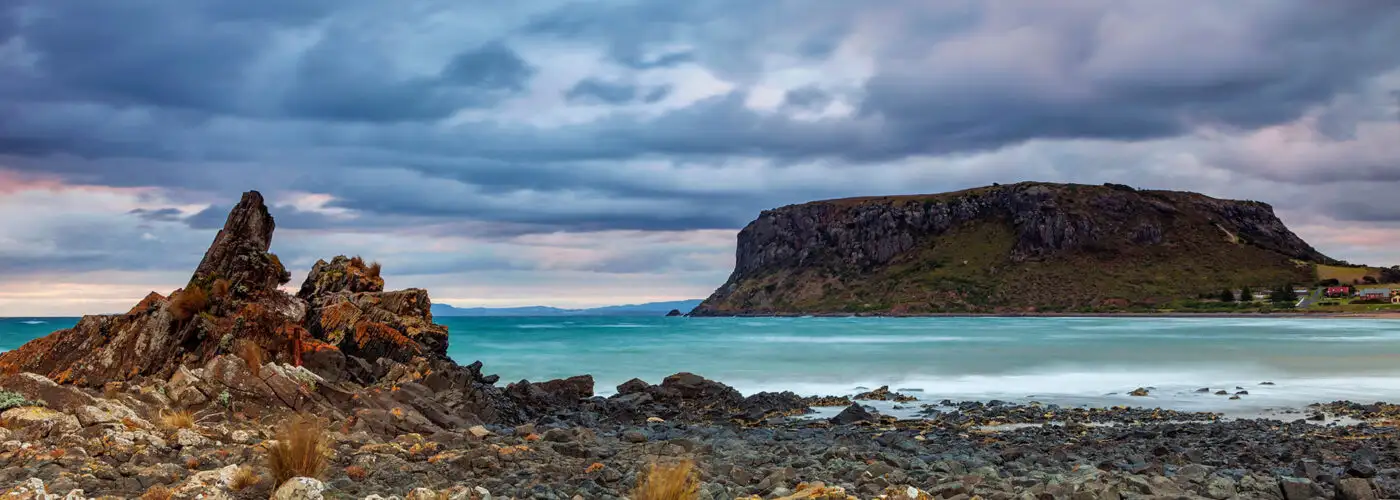
The Top 10 Things to Do in Tasmania
Sarah Schlichter
Deputy Executive Editor Sarah Schlichter's idea of a perfect trip includes spotting exotic animals, hiking through pristine landscapes, exploring new neighborhoods on foot, and soaking up as much art as she can. She often attempts to recreate recipes from her international travels after she gets home (which has twice resulted in accidental kitchen fires—no humans or animals were harmed).
Sarah joined the SmarterTravel team in 2017 after more than a decade at the helm of IndependentTraveler.com. Sarah's practical travel advice has been featured in dozens of news outlets including the New York Times, the Chicago Tribune, USA Today, Budget Travel, and Peter Greenberg Worldwide Radio. Follow her on Twitter @TravelEditor .
The Handy Item I Always Pack: "A journal. Even years later, reading my notes from a trip can bring back incredibly vivid memories."
Ultimate Bucket List Experience: "Road tripping and hiking through the rugged mountains of Patagonia."
Travel Motto: "'To awaken quite alone in a strange town is one of the pleasantest sensations in the world.'—Freya Stark"
Aisle, Window, or Middle Seat: "Aisle. I get restless on long flights and like to be able to move around without disturbing anyone else."
Email Sarah at [email protected] .
Travel Smarter! Sign up for our free newsletter.
Tasmania packs a lot into an island that’s only about the size of West Virginia: dreamy white sand beaches, hidden waterfalls, dense rainforests, rare wildlife, remnants of convict history, and one of the world’s most distinctive art museums. Intrigued? Start planning your trip with this list of the best things to do in Tasmania.
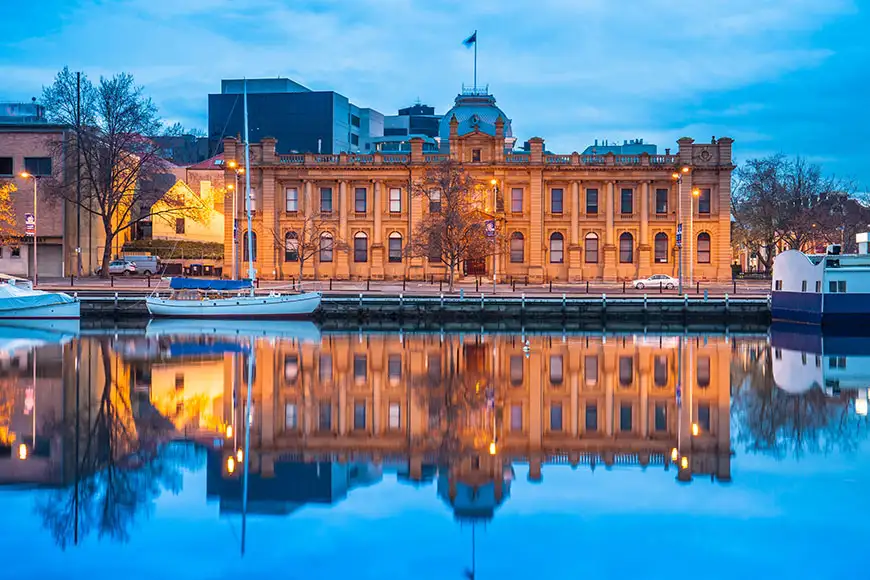
Most visitors to Tasmania will start in Hobart, its attractive capital city. Get an overview of the island’s history, culture, and wildlife at the free Tasmanian Museum and Art Gallery , which displays everything from local Tasmanian art to an exhibit on the now-extinct thylacine, or Tasmanian tiger. For more avant-garde offerings, venture by car or ferry out to the one-of-a-kind Museum of Old and New Art , where the displays are designed to provoke—in more ways than one. If you’re in town on a Saturday, don’t miss the colorful stalls of Salamanca Market , brimming with local foods and gifts.
Other things to do in Hobart include Australia’s oldest operating brewery , a former factory for female convicts , and Mawson’s Hut Replica Museum , where you can see what it’s like to live in an early-20th-century hut in Antarctica. And don’t miss the incredible views over the city from the peak of kunanyi/Mount Wellington .
Check Prices for Maylands Lodge in Hobart
Mt. field national park.
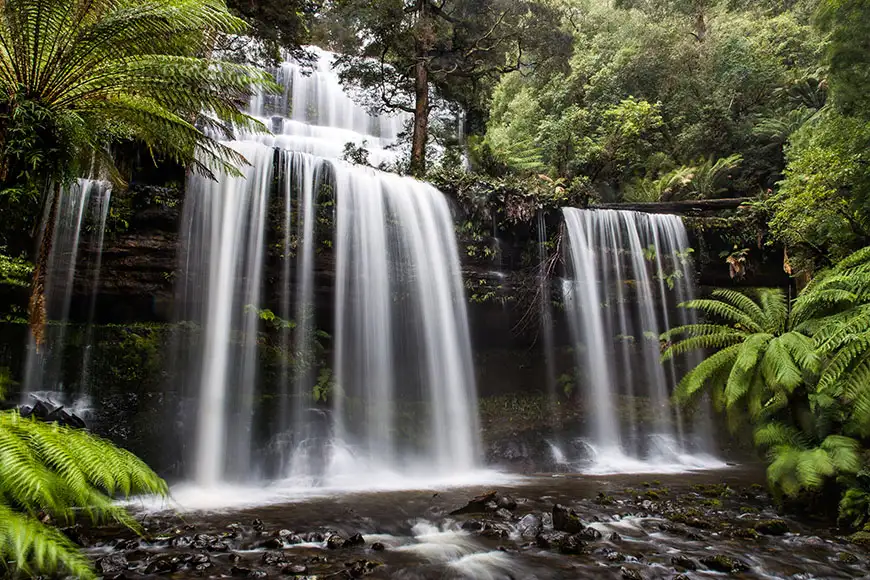
Tasmania’s first national park is also one of its easiest to reach, located only about an hour’s drive from Hobart. Start your visit with the short, wheelchair-accessible trail to Russell Falls , which cascades down three tiers through a lush temperate rainforest. From there you can return by the same path or continue on to the Tall Trees path to peer up at massive swamp gum trees that have been growing for centuries.
Continue deeper into the park along the road to Lake Dobson, where you can pursue a number of other walking trails of various lengths. One highlight for fitter hikers is the Tarn Shelf trail , which passes several scenic mountain lakes and is particularly beautiful in the autumn.
Check Prices for National Park Hotel in Mount Field National Park
Want more expert tips and vacation inspiration? Subscribe to SmarterTravel on YouTube!
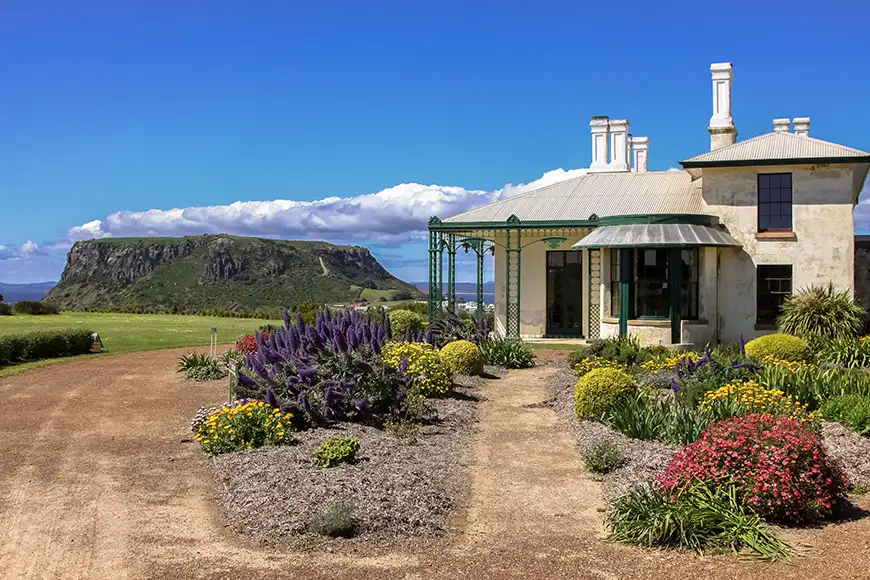
The little town of Stanley is located on a remote peninsula in the far northwest of Tasmania—but it’s well worth the drive. Its main landmark is The Nut , a hulking rock formation that was once an active volcano (but is now safely extinct). To enjoy coastal views from the top, you can make the short but steep climb to the summit or hop aboard a chairlift.
The town is also home to a number of historic buildings, including Highfield Historic Site (an early-19th-century farm built with convict labor) and Joe Lyons Cottage , the house where Tasmania’s only prime minister was born. See more on the self-guided Stanley Heritage Walk .
You’ll find a couple of the best things to do in Tasmania for animal lovers right here in Stanley. Take a 75-minute voyage with Stanley Seal Cruises to see Australian fur seals, or head at dusk to the viewing platform at Godfrey’s Beach to see little penguins come ashore.
Check Prices for Stanley Seaview Inn in Stanley
Maria island national park.
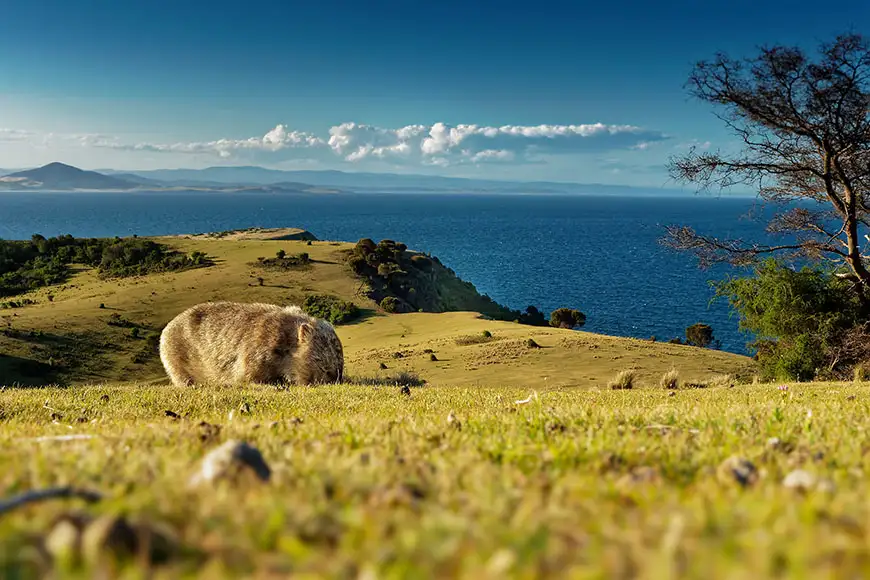
One of the most fun things to do in Tasmania is to visit this unique island sanctuary off the east coast, accessible only by ferry. As you hike the trails and beaches, keep an eye out for wildlife such as wombats, kangaroos, echidnas, and Tasmanian devils, many of whom have been brought to this island to protect them from danger elsewhere in Tasmania.
One popular hiking trail leads across grasslands and along beaches to the colorful limestone formations known as the Painted Cliffs; another leads to dramatic views from the Bishop and Clerk Peaks. You can also go snorkeling in the Maria Island Marine Reserve or walk through the remains of Darlington Township, a former convict station.
Most visitors come to Maria Island for the day, but if you want a deeper look, join the Maria Island Walk for four days of relaxed hiking and wildlife watching.
Check Prices for Triabunna Cabin & Caravan Park in Triabunna
Bay of fires.
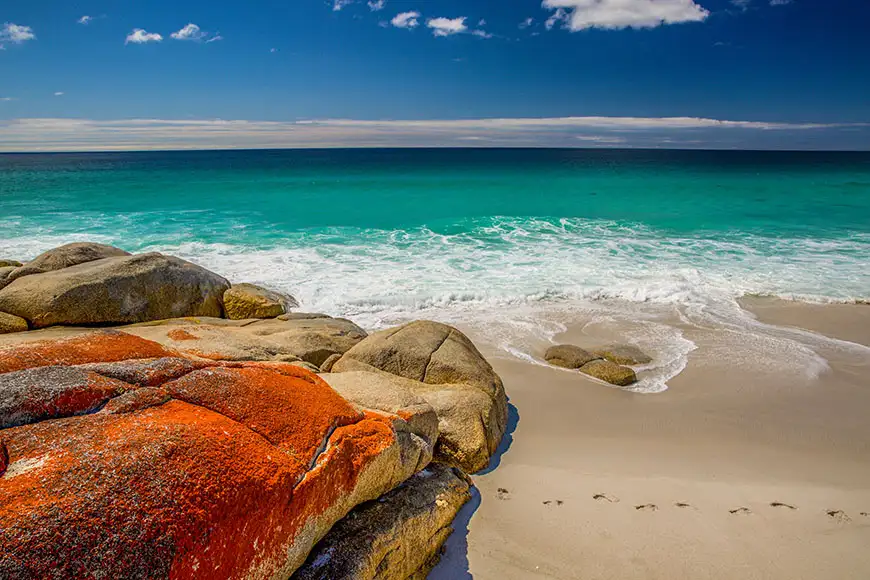
This conservation area on Tasmania’s east coast protects one of the island’s most stunning stretches of white sand beach. The area runs from Eddystone Point to Binalong Bay and was named after the Aboriginal fires spotted on shore by an English navigator as he explored the coast in 1773. The beaches here are best known for the large granite boulders carpeted with a fiery red-orange layer of lichen.
In addition to swimming, sunbathing, and strolling along the beach, you can also explore the area by boat with Bay of Fires Eco Tours .
Check Prices for Beachfront Bicheno in Bicheno
Cradle mountain-lake st. clair national park.
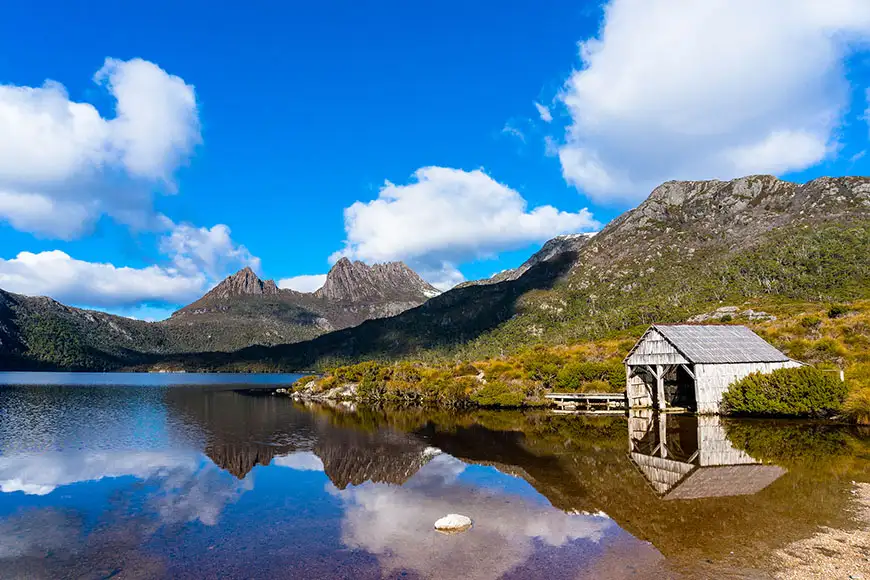
This popular national park is home to Tasmania’s most iconic landmark: Cradle Mountain , which looms over the serene waters of Dove Lake below. Hiking options in the park range from easy to epic. Less taxing options include the two-hour Dove Lake Circuit and a boardwalk stroll along Ronny Creek to see wombats, while more serious hikers can tackle the full-day climb to the top of Cradle Mountain or the six-day, 40-mile Overland Track from Cradle Mountain to Lake St. Clair.
Check Prices for Cradle Mountain Wilderness Village in Cradle Mountain-Lake St. Clair National Park
Port arthur historic site.
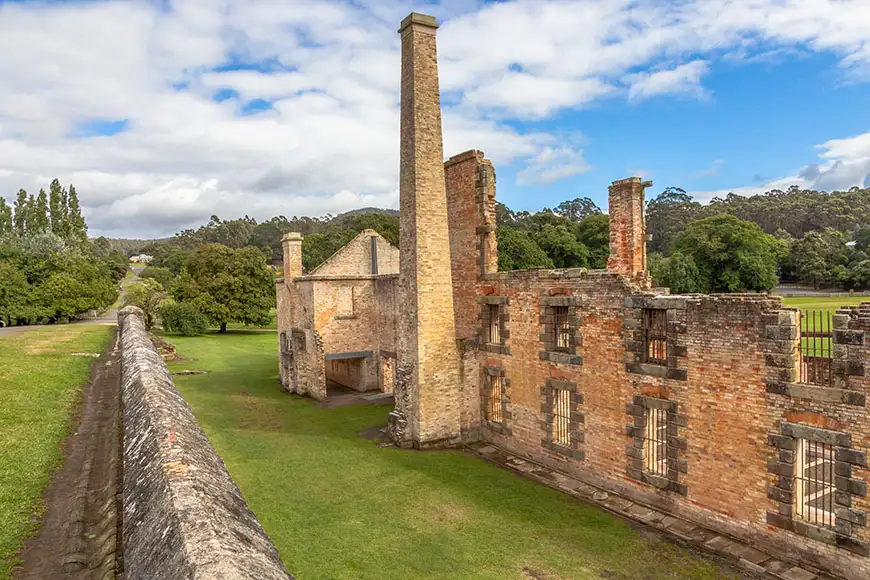
Australia’s best-preserved convict settlement, Port Arthur is one of the top Tasmania attractions for visitors interested in colonial history. The staff help bring the site’s stories and historic figures to life through a variety of tours and experiences, including a ghost tour, a harbor cruise, and a walk through the cemetery where more than 1,000 convicts and others were buried. The site covers 100 acres and dozens of houses, buildings, and gardens; a shuttle is available for those with mobility issues.
Love animals? Consider a side trip to the nearby Tasmanian Devil Unzoo , where you can see kangaroos, wallabies, echidnas, bandicoots, and—of course—Tasmanian devils in a setting that’s less restrictive to the animals than a traditional zoo.
Check Prices for Stewarts Bay Lodge in Port Arthur
Franklin-gordon wild rivers national park.
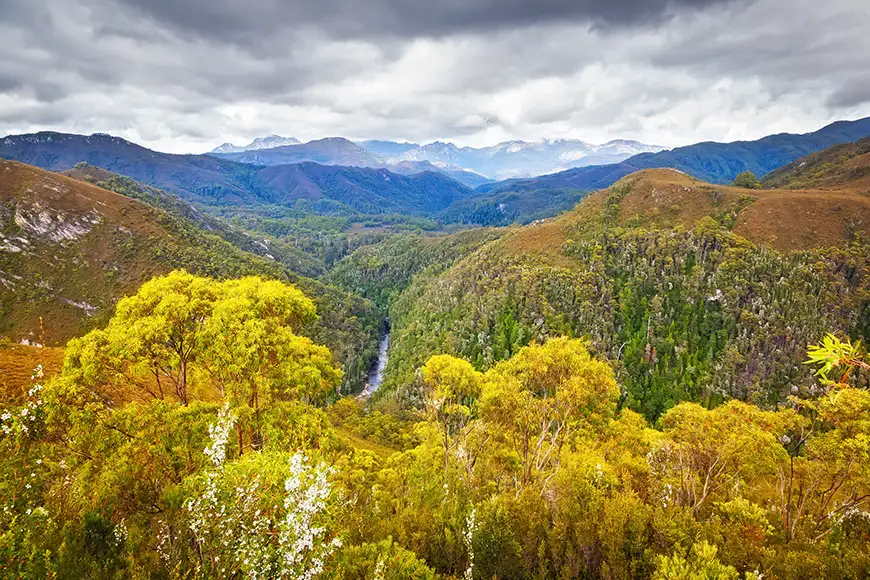
There are several ways to access this wet, wild, western Tasmania national park, known for its dense rainforest and rugged mountain peaks. In Strahan, you can hop aboard a World Heritage Cruises boat for a scenic ride along the Gordon River, with stops to visit convict sites and walk through part of the national park. For a longer, more adrenaline-fueled boat ride, consider an eight- to 10-day whitewater adventure through the national park with Franklin River Rafting .
Those looking to hike in the park have plenty of options, including several short walks off the Lyell Highway, which crosses through the park from east to west. The walk to Nelson Falls takes just 20 minutes round-trip and leads to a stunning waterfall hidden away in the rainforest. For a great view, take the trail to Donaghys Lookout and cast your eyes over Frenchmans Cap and the Franklin River Valley.
Check Prices for Motel Strahan in Strahan
Bruny island.
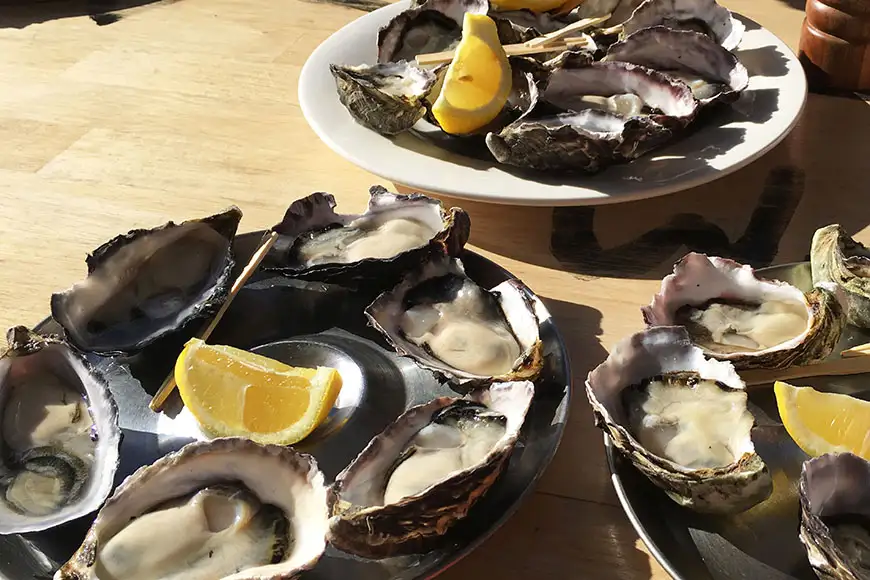
Bruny Island is a popular day trip from Hobart for travelers seeking a mix of beautiful natural landscapes and great local food. Eat and drink your way down the island at spots like Bruny Island Cheese and Beer Company , Bruny Island Honey , Bruny Island Premium Wines , Get Shucked Oyster , and Bruny Island Chocolate Company .
In between food stops, take in the views from the Neck lookout , the rocky cliffs of the Fluted Cape Trail , and the Cape Bruny Lighthouse at the southwestern tip of the island. Keep an eye out for endemic wildlife such as penguins, seals, swift parrots, and rare white wallabies.
Check Prices for Hotel Bruny in Bruny Island
Freycinet national park.
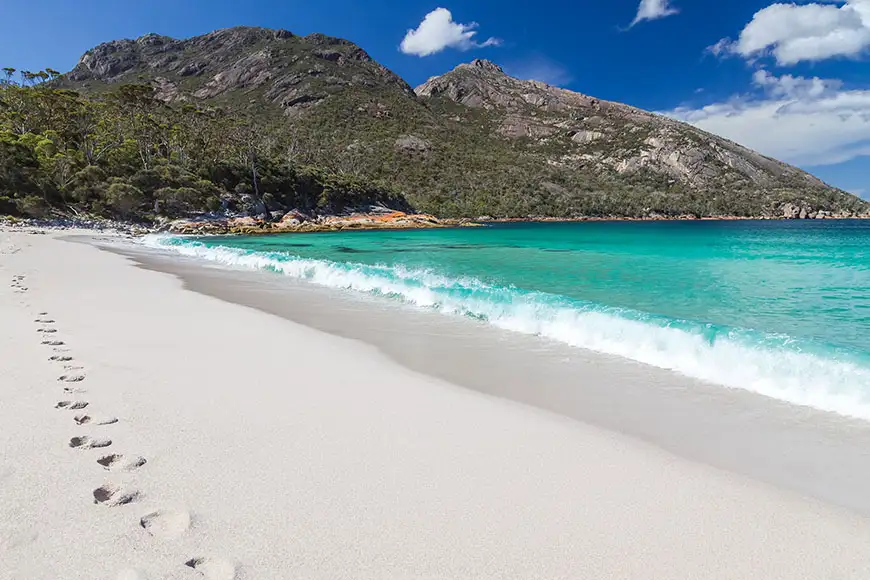
There’s a reason that Freycinet is one of Tasmania’s most popular national parks, and it’s not just its proximity to Hobart (about a two-hour drive). The centerpiece of the park is Wineglass Bay, a pristine crescent of coarse white sand accessible via a hiking trail with more than 1,000 steps. (Those who aren’t up for the hike can enjoy bay and beach views with Wineglass Bay Cruises .)
Elsewhere in Freycinet, you can take a walk along the Friendly Beaches , go sea kayaking in Coles Bay, or take the wheelchair-accessible path to Cape Tourville Lighthouse for sweeping views along the Freycinet Peninsula’s rocky coast.
Check Prices for Edge of the Bay Resort in Coles Bay
More from smartertravel:.
- Getting Back to Nature in Tasmania, Australia
- Tasmania Passport Requirements: Do I Need a Passport?
- Top 25 Ways to Save on Australia Travel
Sarah Schlichter was hosted by Intrepid Travel on her trip to Tasmania . Follow her on Twitter @TravelEditor for more travel tips and inspiration.
We hand-pick everything we recommend and select items through testing and reviews. Some products are sent to us free of charge with no incentive to offer a favorable review. We offer our unbiased opinions and do not accept compensation to review products. All items are in stock and prices are accurate at the time of publication. If you buy something through our links, we may earn a commission.
Top Fares From

Don't see a fare you like? View all flight deals from your city.
Today's top travel deals.
Brought to you by ShermansTravel
Porto to Lisbon: 7-Nt, Small-Group Portugal...
Indus Travels

Greenland: Luxe, All-Incl. 11-Nt Exploration Small-Ship...
Swan Hellenic
Ohio: Daily Car Rentals from Cincinnati

Trending on SmarterTravel
- Australia Tourism
- Australia Hotels
- Australia Bed and Breakfast
- Australia Vacation Rentals
- Flights to Australia
- Australia Restaurants
- Things to Do in Australia
- Australia Travel Forum
- Australia Photos
- All Australia Hotels
- Australia Hotel Deals
- Last Minute Hotels in Australia
- Things to Do
- Restaurants
- Vacation Rentals
- Travel Stories
- Rental Cars
- Add a Place
- Travel Forum
- Travelers' Choice
- Help Center
Tasmania - Travel requirements - Australia Forum
- South Pacific
- Australia
Tasmania - Travel requirements
- United States Forums
- Europe Forums
- Canada Forums
- Asia Forums
- Central America Forums
- Africa Forums
- Caribbean Forums
- Mexico Forums
- South Pacific Forums
- South America Forums
- Middle East Forums
- Honeymoons and Romance
- Business Travel
- Train Travel
- Traveling With Disabilities
- Tripadvisor Support
- Solo Travel
- Bargain Travel
- Timeshares / Vacation Rentals
- South Pacific forums
- Australia forum

Sorry if this sounds like a silly question. Just a bit confused about the border restrictions easing on 15th Dec 21.
After 15th Dec 21 if I visit Tasmania from NSW for a short holiday, will I still need to quarrantine even if I am fully vaccinated and provide a negative PCR test?
Thank you in advance.
This topic has been closed to new posts due to inactivity.
- Length of stay visa evisitor 651 6:12 pm
- Length of stay visa evisitor 651 5:38 pm
- Sydney hotels 5:35 pm
- Thank you 5:26 pm
- East Coast Travel Reviews 5:25 pm
- Melbourne hotels 5:18 pm
- Adelaide hotels 3:19 pm
- Arriving Melbourne Connecting to Sydney 1:04 pm
- My Australian business visitor visa is taking too long 11:54 am
- I would love advice on our itinerary--may not visit again 10:44 am
- Can I enter the caves without the tour? 7:09 am
- 2 weeks in Australia today
- Flying into Sydney on Sunday January 6th 2025 for 11 nights today
- Travel Insurance 33 replies
- Holding koalas 10 replies
- What does CBD mean? 2 replies
- Best Places to Visit 7 replies
- Okay, don't laugh--I want to see a wild kangaroo 13 replies
- Accor advantage plus bad experience 76 replies
- Best zoo in Australia? 13 replies
- Itinerary help needed...East Coast, from Sydney to Cairns! 25 replies
- What to do in Australia for 2 weeks in February 2012 7 replies
- Best way to see Australia and New Zealand 6 replies
Australia Hotels and Places to Stay
- Big Things of Australia - by 1TraveltheWorld
- Iconic Pubs and Roadhouses of Australia - by 1TraveltheWorld
- Across the Nullarbor - Ceduna to Norseman By 1TraveltheWorld
- How Big is Australia?
- FAQ - Top Ten Must Sees
- FAQ - BUDGET Travel Tips
- FAQ - DRIVING in Australia
- FAQ - Vehicle RENTAL Tips
- FAQ - Booking hotel ACCOMMODATION
- FAQ - TIPPING in Australia
- Trip Reports - NT
- Trip Reports - QLD
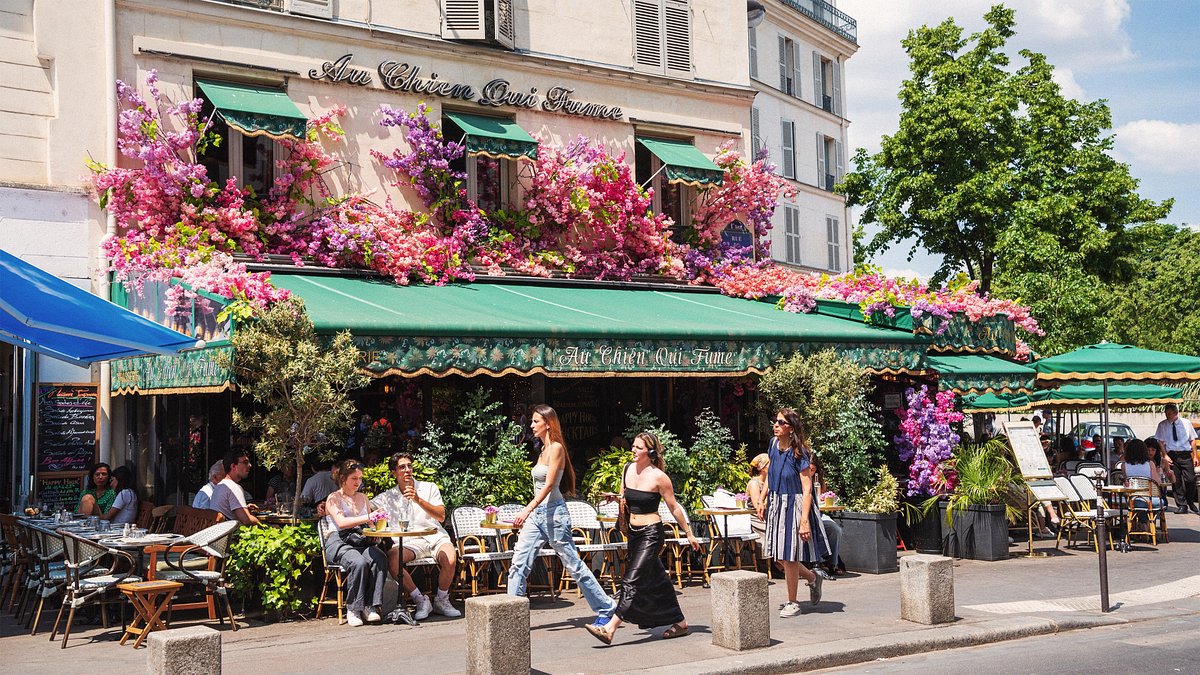
Tasmania tweaks December 15 border plan to drop pre-travel COVID tests for low-risk states
Fully vaccinated travellers from low-risk areas will not have to provide a negative COVID-19 test when entering Tasmania under a tweak to the state's December 15 border reopening plan, Premier Peter Gutwein has announced.
Key points:
- The 72-hour pre-travel testing requirement will remain in place for high-risk areas
- As of today, 90 per cent of eligible Tasmanians have had at least one dose of a COVID-19 vaccine
- Tasmanian venues will not need to ask customers for proof of vaccination, the Premier says
In a change to the plan that will see Tasmania reopen to COVID hotspots, the 72-hour pre-travel testing requirement will not be needed for some states, but it will remain in place for high-risk areas such as Victoria, New South Wales and the ACT.
The states that Tasmania currently considers low risk are: Queensland, South Australia, Western Australia and the Northern Territory.
"I'll explain our thinking in regard to that. Up until December 14, [you're are able to go] back and forth from Western Australia without being vaccinated at all, having no test," Mr Gutwein said.
"On the 15th, you'll be required to be fully vaccinated."
At the moment, travellers from low-risk states do not need a pre-travel COVID test when coming to Tasmania, but the requirement was set to come in place after December 15.
Tasmania hits 90 per cent first dose
Mr Gutwein also said the state had hit a "significant" vaccination milestone, with 90 per cent of Tasmanians aged 16 and over having had one dose of a COVID-19 vaccine.
He said the state was "very well placed" to hit its vaccination target of 90 per cent fully vaccinated by early December.
"You've got to continue to turn up. If you've had the first vax — 90 per cent of you will have as of today — turn up and get that second vax when it's due," Mr Gutwein said.
"It puts us in a great position in terms of being ready to open our borders on the 15th of December."
Currently, 77 per cent of Tasmanians are fully vaccinated.
No proof of vaccination needed for venue entry
Mr Gutwein said with the 90 per cent vaccination rate, there would not be a need for vaccine passports to be implemented for entry to local businesses or events.
"For businesses, if they wish to make that decision, that will be a matter for business in the state," he said.
Public Health director Mark Veitch said most businesses would already have a COVID-19 management plan.
"Your best way of preparing for the 15th of December is to dust off your COVID safety plan, make sure that it's still operational," he said.
He said when positive cases are detected after December 15, they will need to isolate at home and will not be left to "wander around the community".
"We will seek to test people to find as many cases as possible as cases emerge in the state over the coming months," he said.
"Cases will continue to be isolated until they no longer pose a risk to the broader community. Mostly that will be for people at home."
- X (formerly Twitter)
Related Stories
Tasmania to throw open borders to covid hotspots december 15.
- Health Policy
- Quarantine - Medical
- State and Territory Government
Tasmania travel advice for international visitors
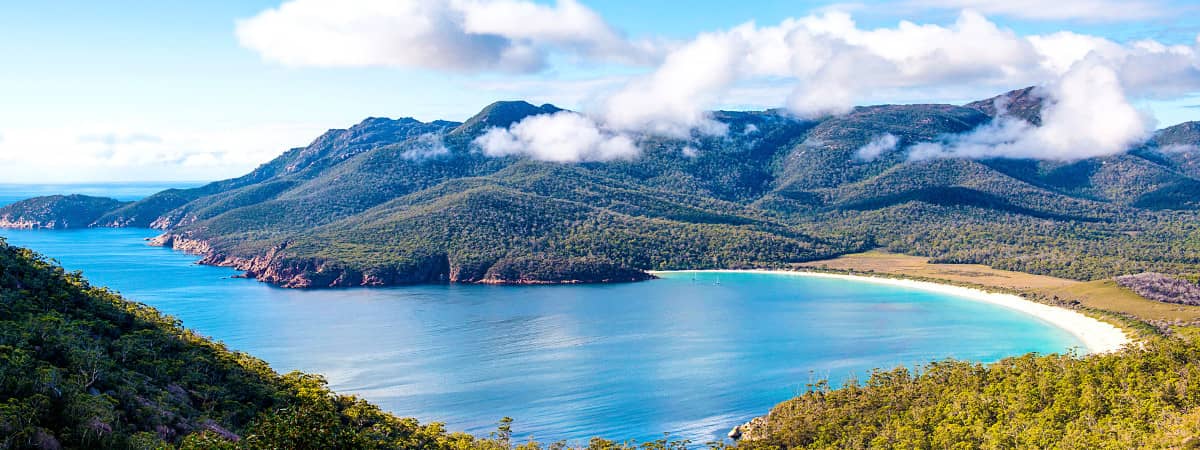
When planning a holiday in Tasmania, it is important to have clear in your mind what you need. These include any necessary documents for international travel.
One common question involves whether there is a separate visa for Tasmania , or if it is possible to visit the island with a normal Australia visa.
Get all the information and advice to travel to Tasmania in this thorough guide for international visitors. Readers will learn about:
- Documents needed to visit Tasmania
- Tasmania’s visa requirements
- How to get to Tasmania and explore the island
- When to travel to Tasmania
Tasmania document requirements for foreign visitors
When visiting Tasmania, foreign nationals will need the following items :
- Driving license and international driving permit (if you intend to drive during your stay)
- Accommodation booking confirmation
- Tickets or booking references for any activities planned
- Insurance (if applicable)
- Proof of onward travel (if applicable)
When arriving from abroad, many travellers will only need to show their passport and visa.
Do I need a visa for Tasmania?
The vast majority of foreign nationals need a visa in order to enter Australia and, therefore, Tasmania. The type of visa required for Tasmania depends on your nationality.
For eligible tourists, the fastest and easiest option is an online visa like the eVisitor visa and the ETA. The application takes only a few minutes to complete and can be submitted online from anywhere in the world.
You must bring the passport you used during the application along with the visa.
New Zealanders may travel to Tasmania without a visa and be issued with one on arrival, as per the Trans-Tasman Travel Arrangement.
Is there a visa specifically for Tasmania?
If you are visiting Tasmania on holiday, for a business trip, or for certain other activities, you can use the general Australian short-stay visas .
For most travelers, these will be the eVisitor or ETA for Tasmania , which can be obtained online
To stay in Tasmania long-term, you would need to inquire about a Tasmanian permanent residence visa at an Australian Embassy.
How to get to Tasmania
Tasmania is an island territory, meaning that it can only be reached by plane or ferry . The main airport in the state is Hobart Airport (HBA.) There have been no scheduled international flights since 1998, but the airport maintains customs and immigration facilities.
HBA serves about 2 million passengers per year . Most flights to Hobart Airport depart from Melbourne, Sydney, and Brisbane. Other direct domestic flights to Tasmania land in Launceston, Wynyard (Burnie), Devonport, King and Flinders Island.
Some travellers decide to get to Tasmania from Melbourne by sea . This can be a good alternative - especially for those who are not on a tight schedule and wish to take their car with them.
Best time to go to Tasmania
Visitors should keep in mind that Tasmania is located in the Southern hemisphere , meaning that summer runs between December and February. This is also considered peak season , so prices may be higher and it is advisable to book well in advance.
The Tasmanian winter starts in July and it is the best time to see the snow and practice winter sports. However, temperatures can be quite rigid.
Spring and summer are a better choice for beach activities and bushwalking.
What is the best way to travel around Tasmania?
The most convenient way to get around Tasmania is by car . Many international visitors decide to hire a vehicle and explore the island’s beauties at their own pace.
Although driving in Australia means for many having to get their translated into English and/or getting used to driving on the left , this can still be the easiest and most fun way to move, especially with the family or a travel buddy.
Tasmania safety advice for tourists from overseas
Tasmania and Australia in general are considered very safe destinations for tourists . Australians are very friendly and welcoming people, happy to greet and help visitors should the need arise. Do not hesitate to ask for directions or assistance.
Tasmania and Hobart experience even lower crime rates than the national average according to 2017-2018 national crime statistics. However, travellers should be aware of petty crimes and the risks associated with spending time in the wilderness in an area one is not familiar with.
General safety advice for Tasmania includes:
- Keeping your belongings close
- Avoiding carrying expensive items, especially in crowded places
- Always having plenty of water and food with you when hiking and driving
- Considering hiring a local guide for explorations
- Telling someone about your plans if taking part in a multi-day trek
- Swimming in patrolled beaches only
Is Tasmania expensive to travel to?
Compared to the price of a trip to Australia, a Tasmanian holiday can be relatively inexpensive. Visitors can expect to spend about AUD $150 per day, although it is possible to spend much more or less depending on one’s choices on accommodation.
Booking well in advance and avoiding peak season will noticeably help travellers on a tight budget.
Related Posts
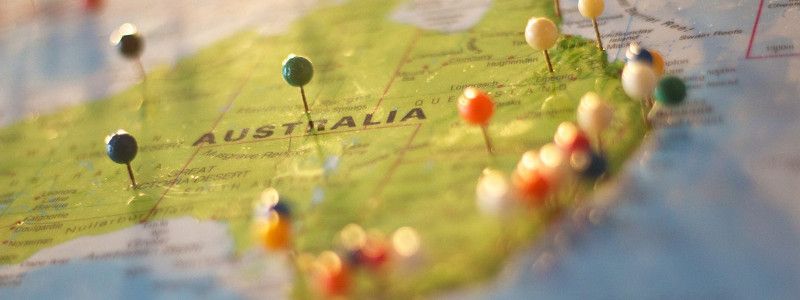
Extending a tourist visa for Australia

Travel to Australia with a criminal record
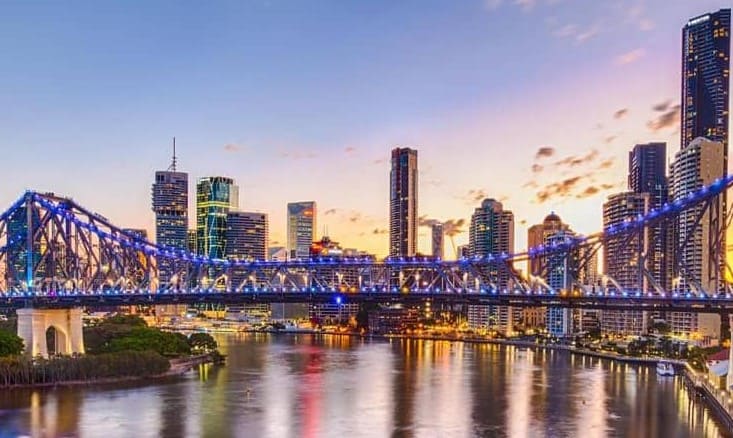
Brisbane: a visitor’s guide to the capital of Queensland
Get Daily Travel Tips & Deals!
By proceeding, you agree to our Privacy Policy and Terms of Use .
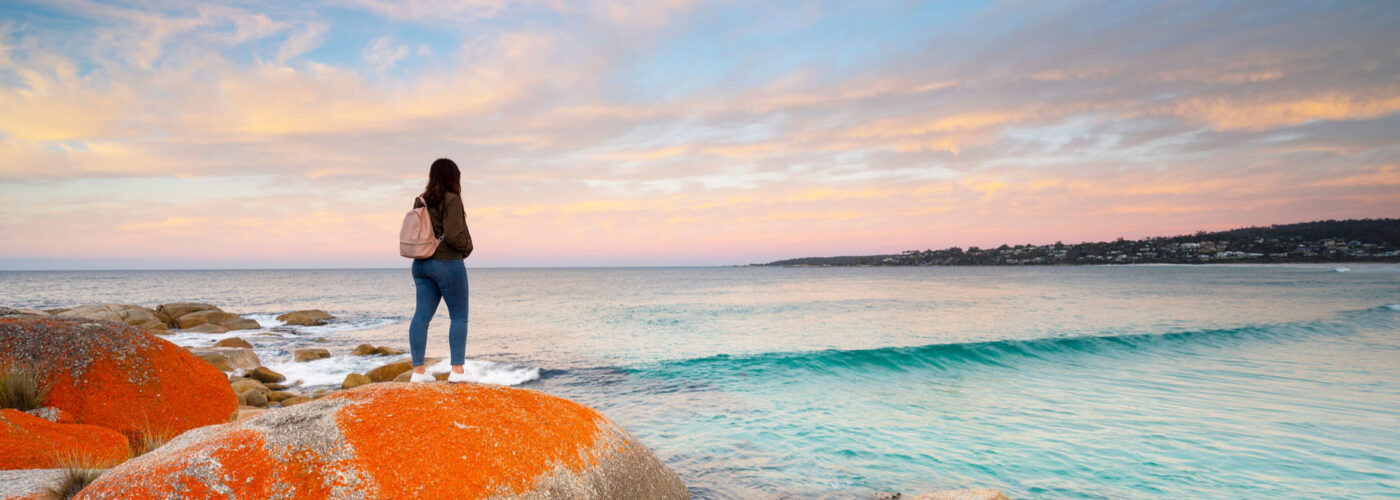
Tasmania Passport Requirements: Do I Need a Passport to Go to Tasmania?
Kate H. Knapp
Travel Smarter! Sign up for our free newsletter.
As an island state in the Commonwealth of Australia, Tasmania is about as far away as one can get from the United States—or, at least, it feels that way. The island is only accessible by boat or plane, with flights to Tasmania leaving from cities such as Melbourne, Sydney, and Brisbane. Tasmania passport requirements state that a passport isn’t required to visit Tasmania, but you will need one to enter Australia. You will also be required to have a visa or an Electronic Travel Authority (ETA) upon your arrival in the country.
Tasmania Passport Requirements
Though Tasmania passport requirements do not state that a passport is required to get to Tasmania from the mainland, Americans will need a valid U.S. passport—with at least one blank page for an entry stamp—to enter Australia. A visa is also required to visit the country, but those traveling for tourism or business for less than 90 days can opt to obtain a label-free visa known as an Electronic Travel Authority (ETA) for a small fee.
Travelers from eligible countries, who are over 16 and have a valid epassport, are permitted to use SmartGate , Australia’s automated border processing system, when arriving from an international destination.
How to Get a Passport Book for Travel to Tasmania
If you don’t already have one, apply for a passport as soon as your international travel is confirmed. The cost will be greater if you apply for a passport within two weeks of travel time and need an expedited application . You can learn more about the requirements and documents needed to obtain a U.S. passport here .
Other Tasmania Travel Requirements
Visa : For U.S. citizens traveling for up to 90 days for tourism or business, an ETA is required. For longer stays, a visa is required.
Vaccinations : No
HIV/AIDS Entry Restrictions : Some entry restrictions exist, and a physical examination may be required, depending on the type of visa and the length of your stay. See Australia immigration health requirements before traveling.
So Do I Need a Passport to Visit Tasmania?
In summary: Technically, no, but for all practical purposes, yes (unless you’re an Australian passport holder). Tasmania passport requirements state that you do not need a passport to visit Tasmania from the mainland. You will, however, need a valid passport, with at least one blank page for an entry stamp, and an Electronic Travel Authority (ETA) to enter Australia.
Protect Your Passport
We recommend investing in a passport cover or wallet to protect your pages from bends, tears and spills. It’s important to keep your passport in good condition for easy inspection.
On travel days, only take your passport out during inspection. Otherwise, keep it stowed away in a dedicated section of your bag (if you keep it in the same place every time, you won’t ever scramble to locate it). Once you arrive at your destination, find a way to stow it securely. In-room safes or safe deposit boxes at the hotel front desk are generally good options, but if neither is available, you’ll need to decide how to keep your passport secure. You might consider keeping it in an under-clothing money belt that you wear, or leaving it in the hotel or vacation rental but locking it in your suitcase with a TSA-approved lock .

More from SmarterTravel:
- The 10 Best Things to Do in Tasmania
- Passport Book vs Passport Card: Which Do I Need?
- How to Take Your Own Passport Photo
We hand-pick everything we recommend and select items through testing and reviews. Some products are sent to us free of charge with no incentive to offer a favorable review. We offer our unbiased opinions and do not accept compensation to review products. All items are in stock and prices are accurate at the time of publication. If you buy something through our links, we may earn a commission.
Top Fares From

Don't see a fare you like? View all flight deals from your city.
Today's top travel deals.
Brought to you by ShermansTravel
Porto to Lisbon: 7-Nt, Small-Group Portugal...
Indus Travels

Greenland: Luxe, All-Incl. 11-Nt Exploration Small-Ship...
Swan Hellenic
Ohio: Daily Car Rentals from Cincinnati

Trending on SmarterTravel

IMAGES
COMMENTS
All travellers to Tasmania, including returning residents, need to provide their contact and travel details before entering the state on the Tas e-Travel system, which has replaced the G2G pass.
Safe Travel. There are currently no entry requirements in place for travellers to Tasmania. On the journey to Tasmania, apply the basic principles of hygiene: wear a mask where required; wash your hands regularly; delay travel and get tested for coronavirus if you're feeling sick; and practise social distancing wherever possible.
Tasmania will instead maintain existing public health measures and a high level of contact tracing. One version of this would lead to a projected average of 258 daily cases with the peak expected ...
All travellers to Tasmania, including returning residents, need to register their contact and travel details on the new Tas e-Travel system. The requirements vary depending on where travellers are ...
Tasmania will open its border to all vaccinated travellers from December 15 without a need for quarantine. Interstate and international travellers will need to provide a negative COVID test within ...
About coronaviruses and COVID-19. COVID-19 is an infectious disease caused by a virus called SARS-CoV-2 that can be severe, particularly for people who are not up to date with vaccination - or have conditions that increase their risk of complications. Some coronaviruses cause illness in humans, and others cause illness in animals.
Tasmania Travel is allowed from all other states and territories for those who are fully vaccinated. All travellers to Tasmania are required to complete registration and have proof of vaccination.
Go camping Tassie hotel rooms can cost more than $100 per night, while campgrounds range from 6 to 13 Australian dollars (or $5 to $10) per night, per person to AU$30 to AU$50 (about $24 to $40 ...
This essential travel guide will help you navigate everything from climate and weather to accommodation options and transportation choices. You'll also discover popular tourist attractions, shopping destinations, outdoor activities, nightlife hotspots, and useful safety tips as you explore what Tasmania offers.
Other Tasmania Travel Requirements Visa : For U.S. citizens traveling for up to 90 days for tourism or business, an ETA is required. For longer stays, a visa is required.
These restrictions include the requirement for a G2G PASS, potential quarantine requirements based on travel history, and monitoring measures to ensure compliance. International travel to Tasmania is currently restricted to certain individuals, who must undergo mandatory quarantine.
10. Biodiversity is sacred. If it's your first time visiting Australia but also your first time visiting Tasmania, remember that there are strict laws in place to conserve and protect Australia's biodiversity. Given that Tasmania itself is an island, the unique species only found here also need additional protection.
Tasmania's borders are reopening on December 15 to people who have been fully vaccinated. People returning to Tasmania to high-risk areas will need to have a COVID test on arrival and isolate ...
The Australian Government does not currently have any COVID-19 requirements in place for travellers entering and departing Australia. COVID-19 however continues to pose a health risk in Australia and overseas. We strongly encourage wearing masks and being vaccinated while travelling internationally.
Top things to do. Getting to Tasmania. Reconnect with nature, wildlife and your taste buds on a trip to the impossibly beautiful island state of Tasmania. Tasmania's natural beauty is captivating, its cultural experiences are diverse, and its food and drink offering is enviable. Get a true taste of Tasmania in its fresh apple cider, cheeses ...
Further information about Tasmania's entry conditions, including evidence requirements and exemption criteria and processes from 15 December 2021, will be provided as available. Travellers should not attempt to register their travel for 15 December and beyond through the current systems at this stage."
Here are some things you might need to know before visiting Tasmania. Passport and visa. Tasmania is a state in the Commonwealth of Australia. All foreign travellers need a passport to enter Australia. Travellers entering Australia on a foreign passport need a visa regardless of the purpose or duration of their stay.
Maria Island National Park. Martin Pelanek/Shutterstock. One of the most fun things to do in Tasmania is to visit this unique island sanctuary off the east coast, accessible only by ferry. As you ...
The rules have changed twice between last Friday and this week. But the good news is Tasmanians returning from a short trip interstate no longer have to isolate while waiting for their test results.
Tasmania - Travel requirements. 2 years ago. Save. Hi All. Sorry if this sounds like a silly question. Just a bit confused about the border restrictions easing on 15th Dec 21. After 15th Dec 21 if I visit Tasmania from NSW for a short holiday, will I still need to quarrantine even if I am fully vaccinated and provide a negative PCR test?
At the moment, travellers from low-risk states do not need a pre-travel COVID test when coming to Tasmania, but the requirement was set to come in place after December 15.
When planning a holiday in Tasmania, it is important to have clear in your mind what you need. These include any necessary documents for international travel.. One common question involves whether there is a separate visa for Tasmania, or if it is possible to visit the island with a normal Australia visa.. Get all the information and advice to travel to Tasmania in this thorough guide for ...
The cost will be greater if you apply for a passport within two weeks of travel time and need an expedited application. You can learn more about the requirements and documents needed to obtain a U.S. passport here. Other Tasmania Travel Requirements. Visa: For U.S. citizens traveling for up to 90 days for tourism or business, an ETA is required ...